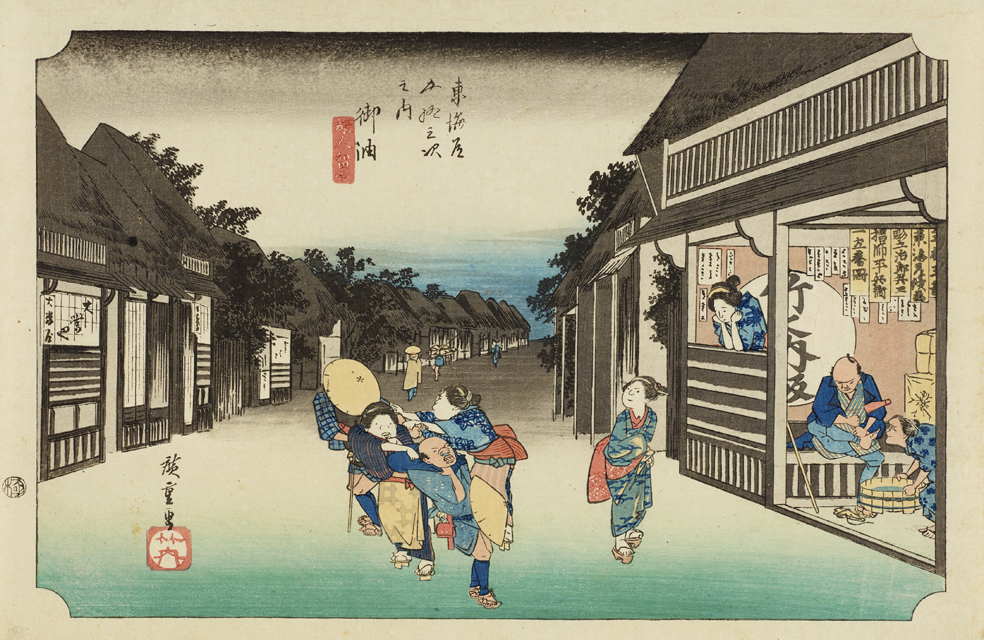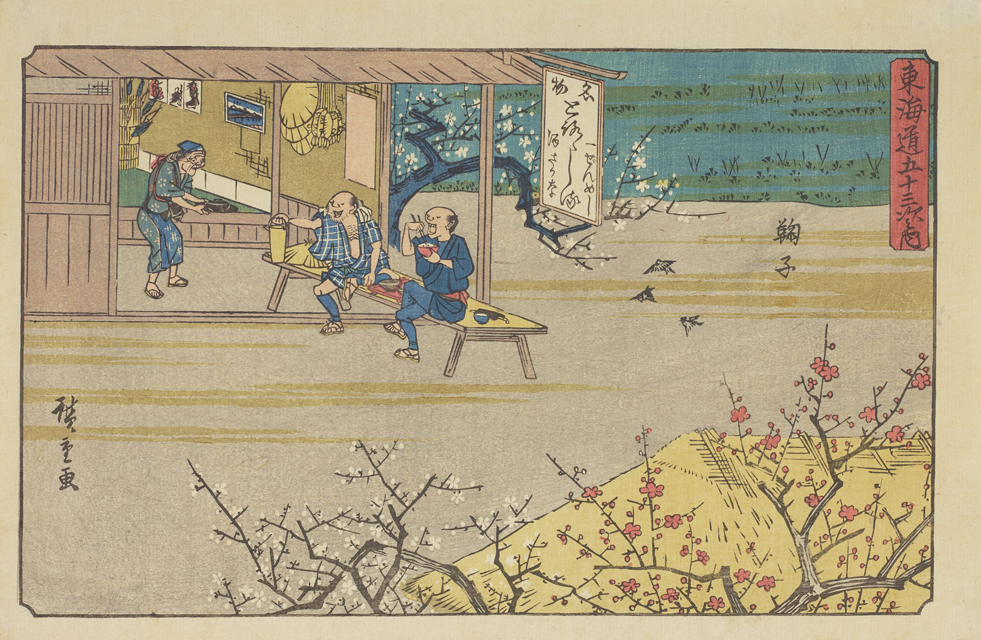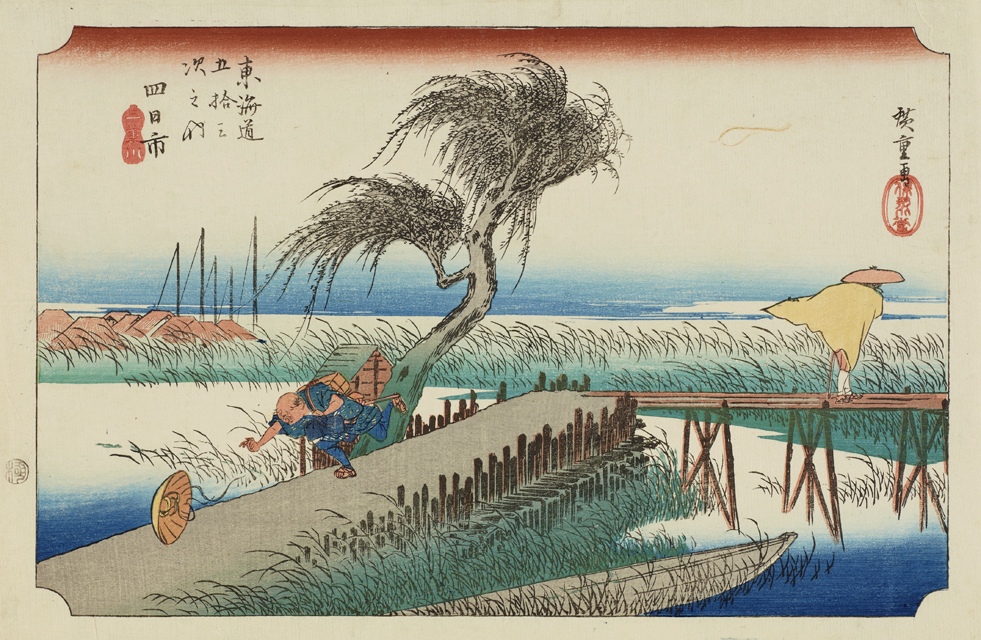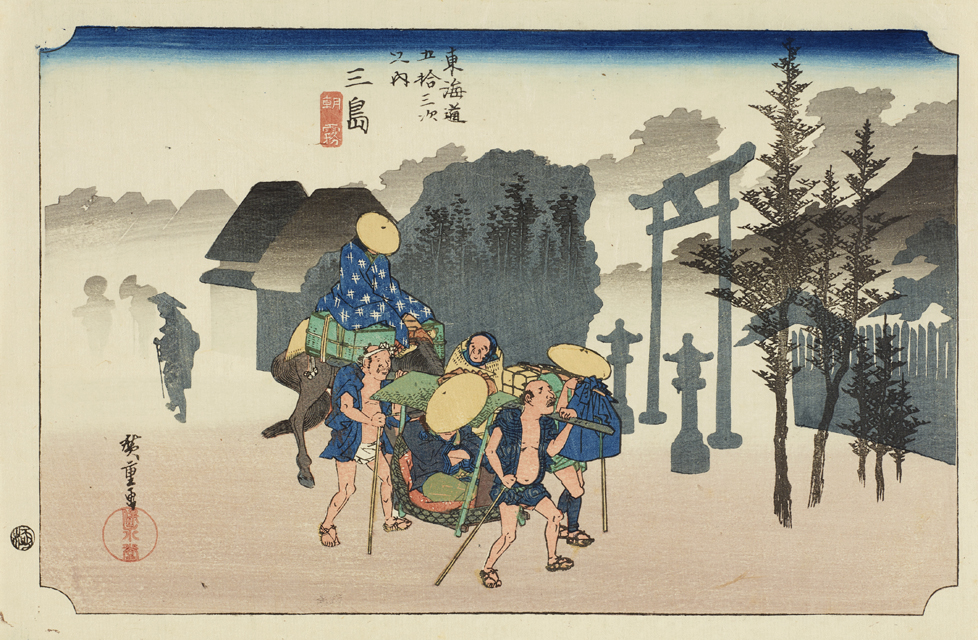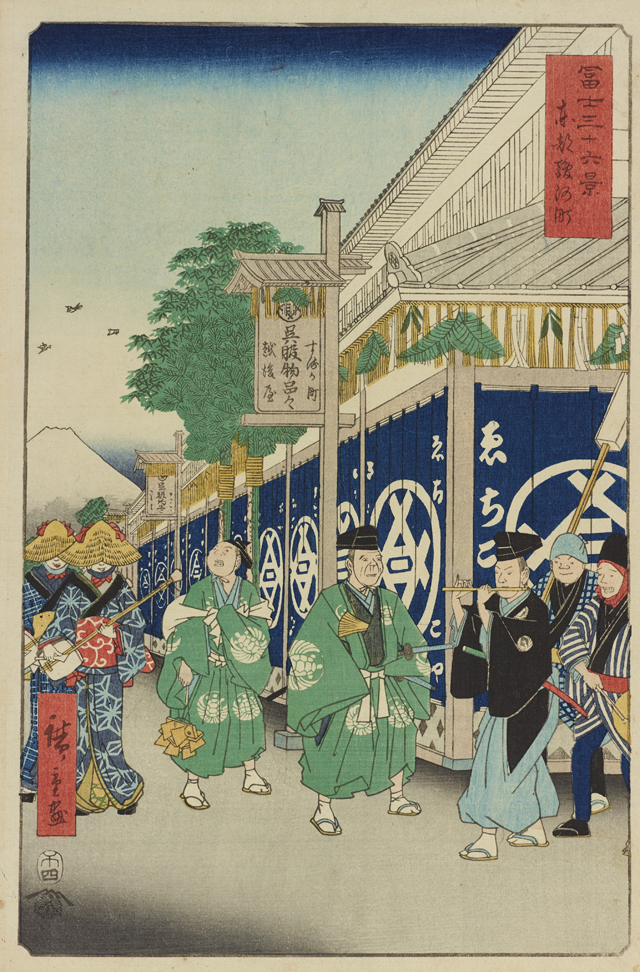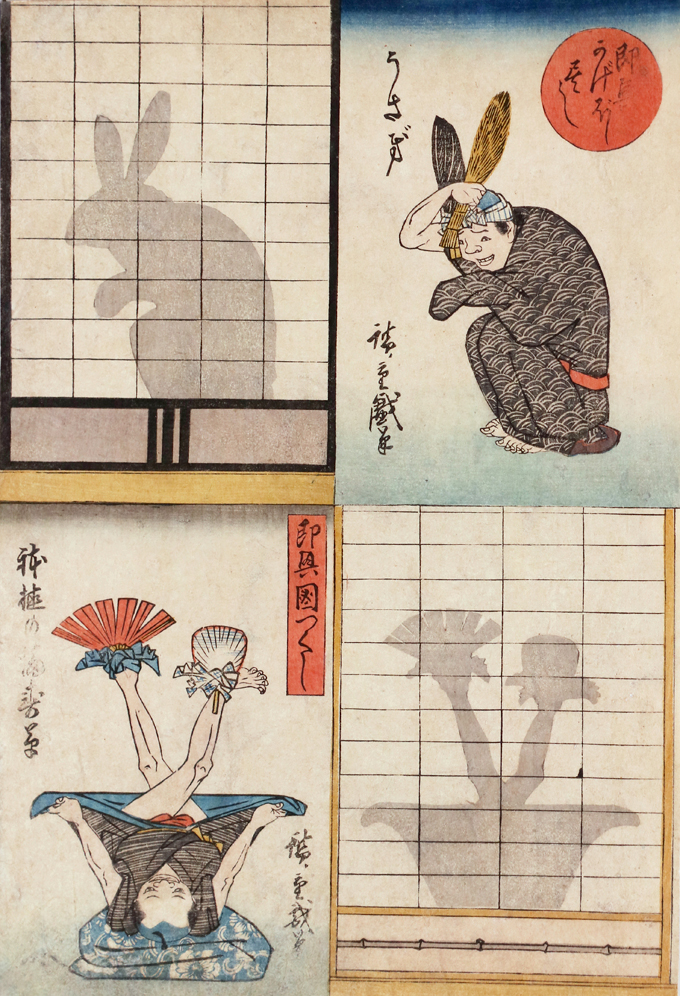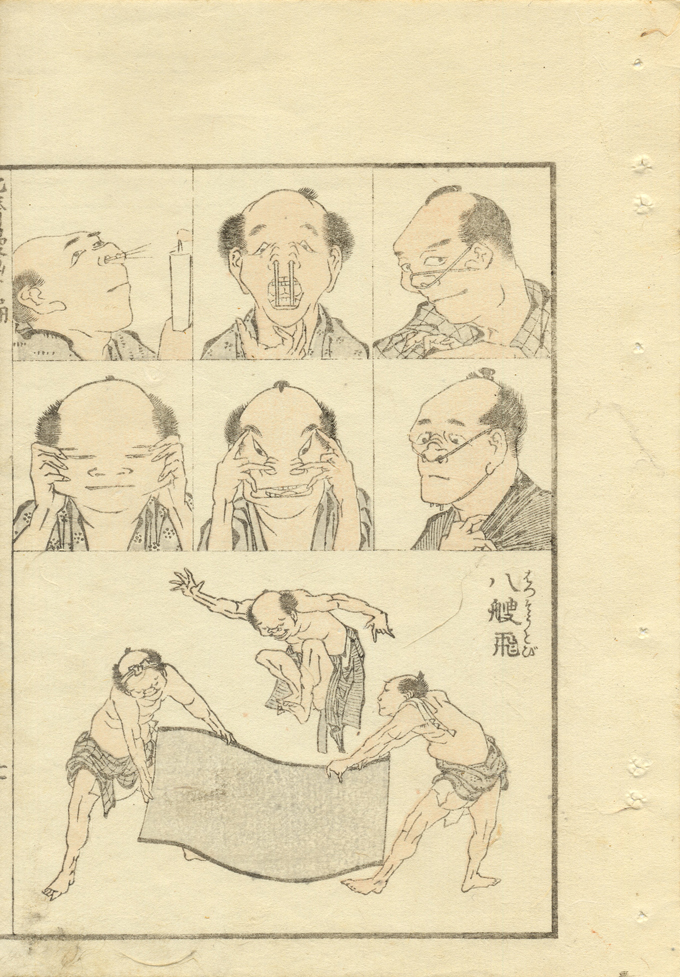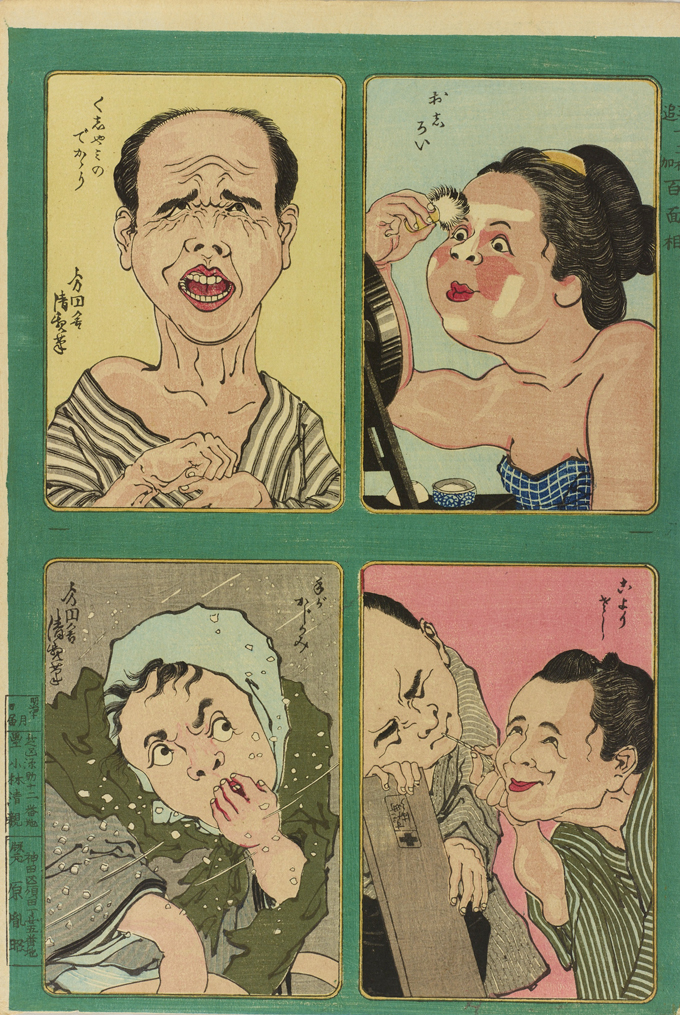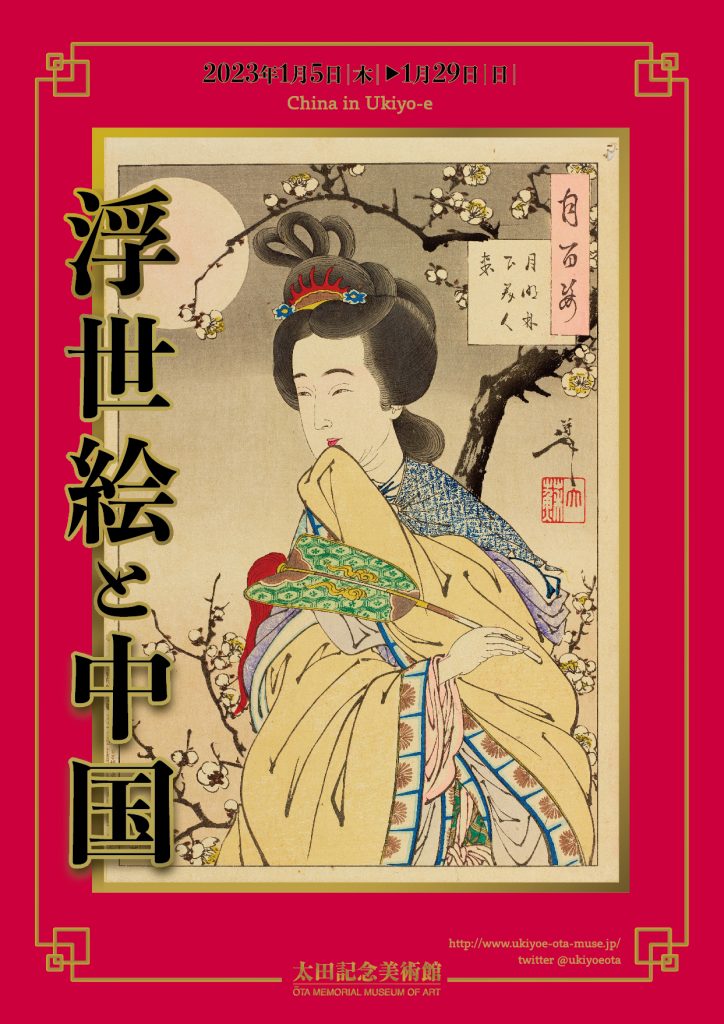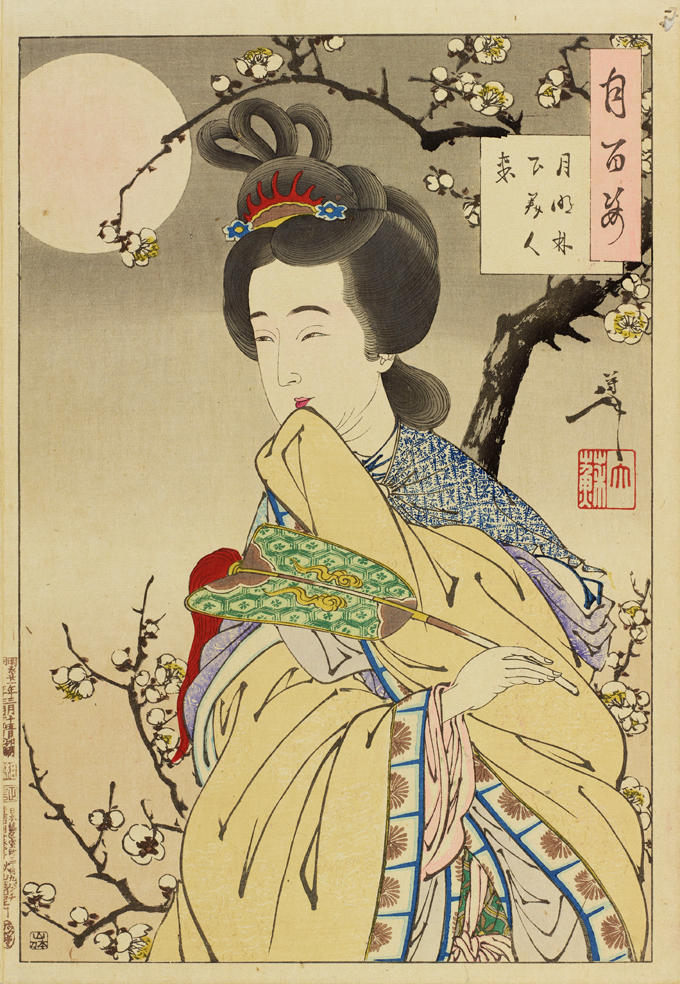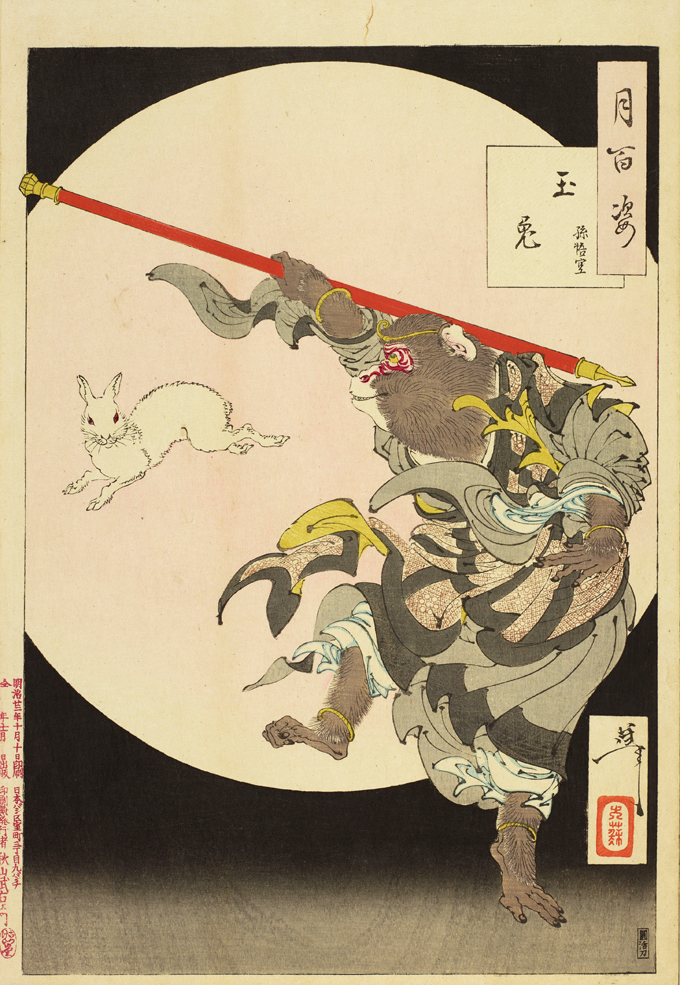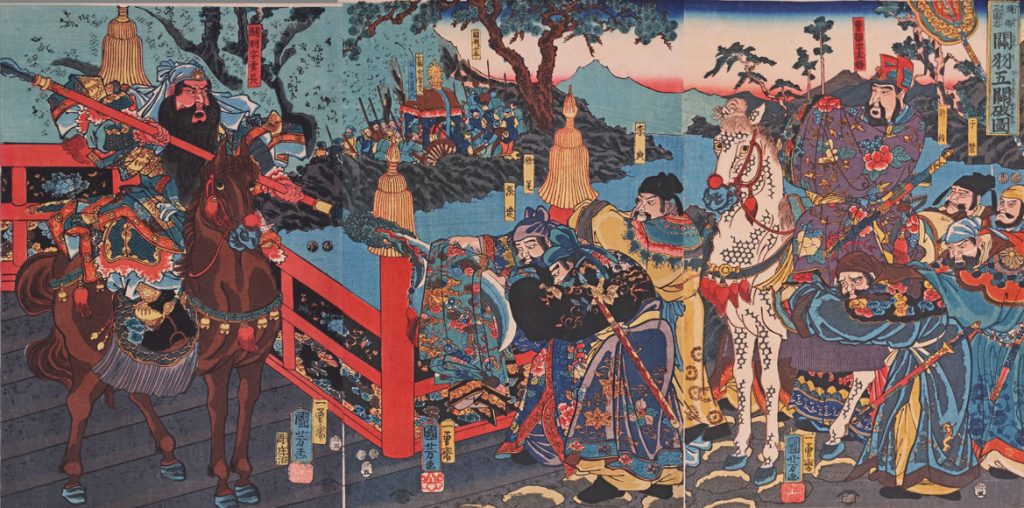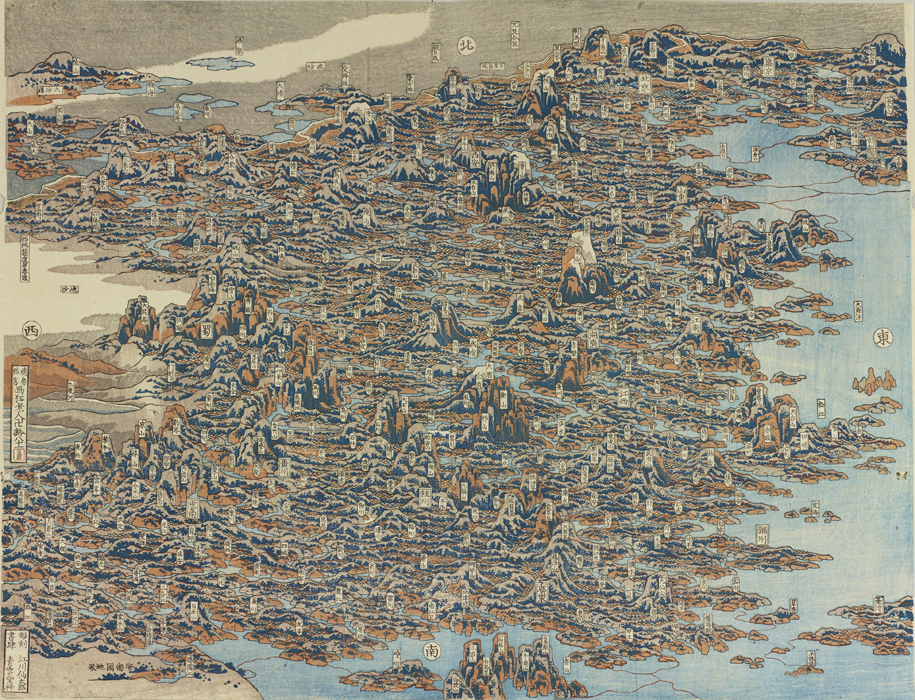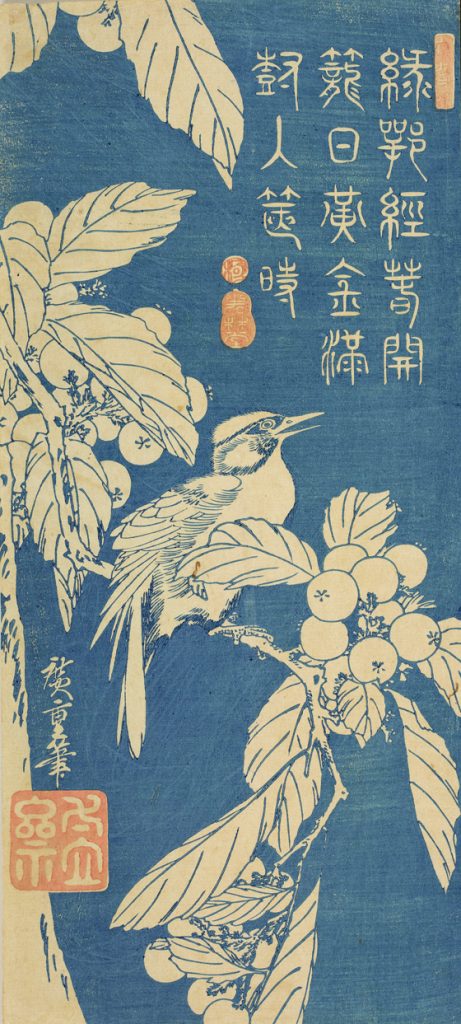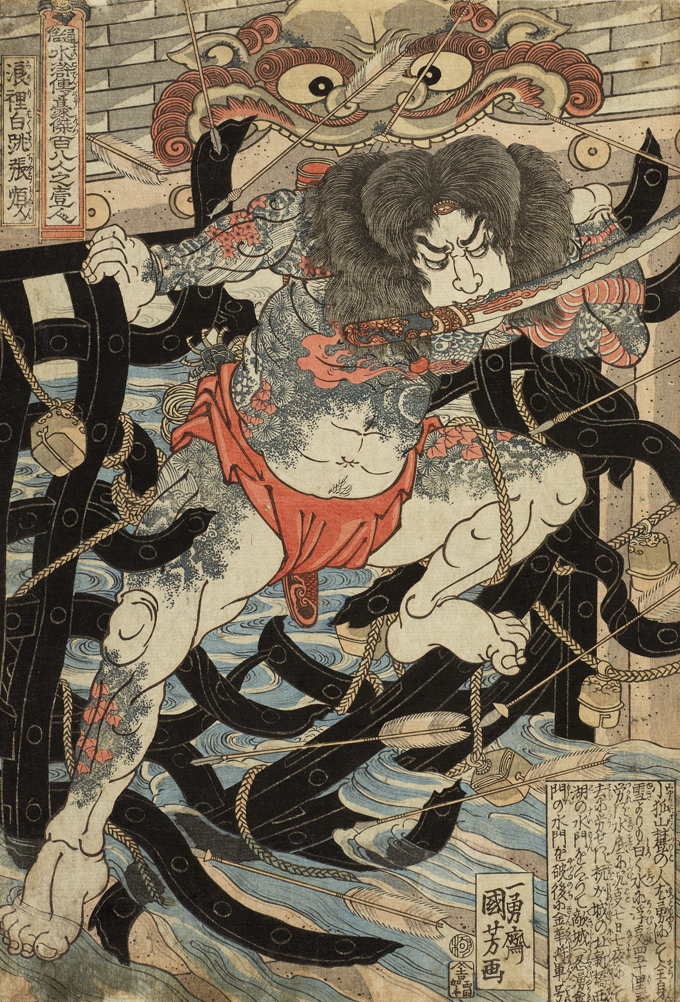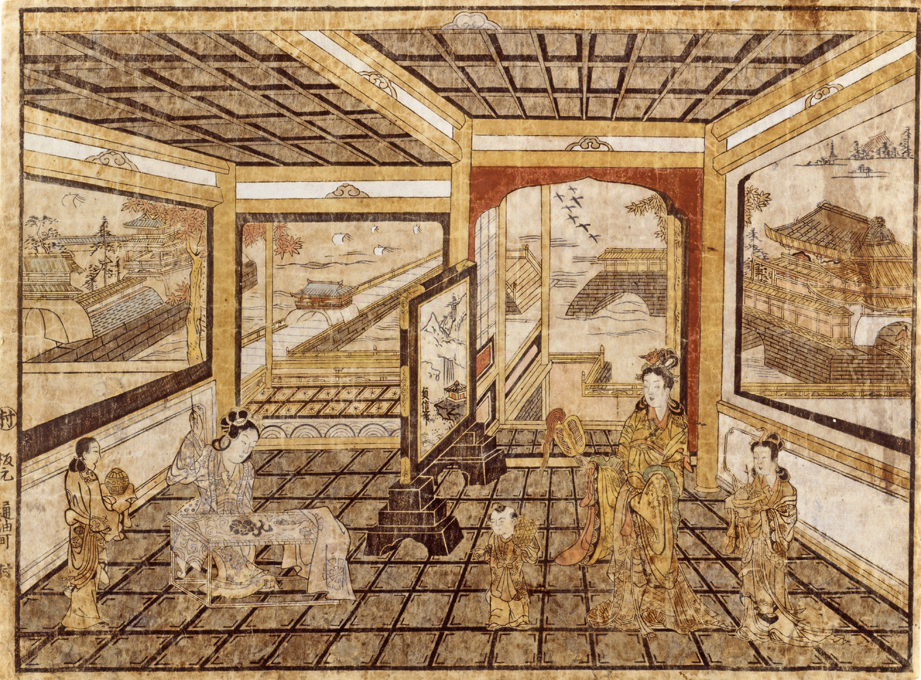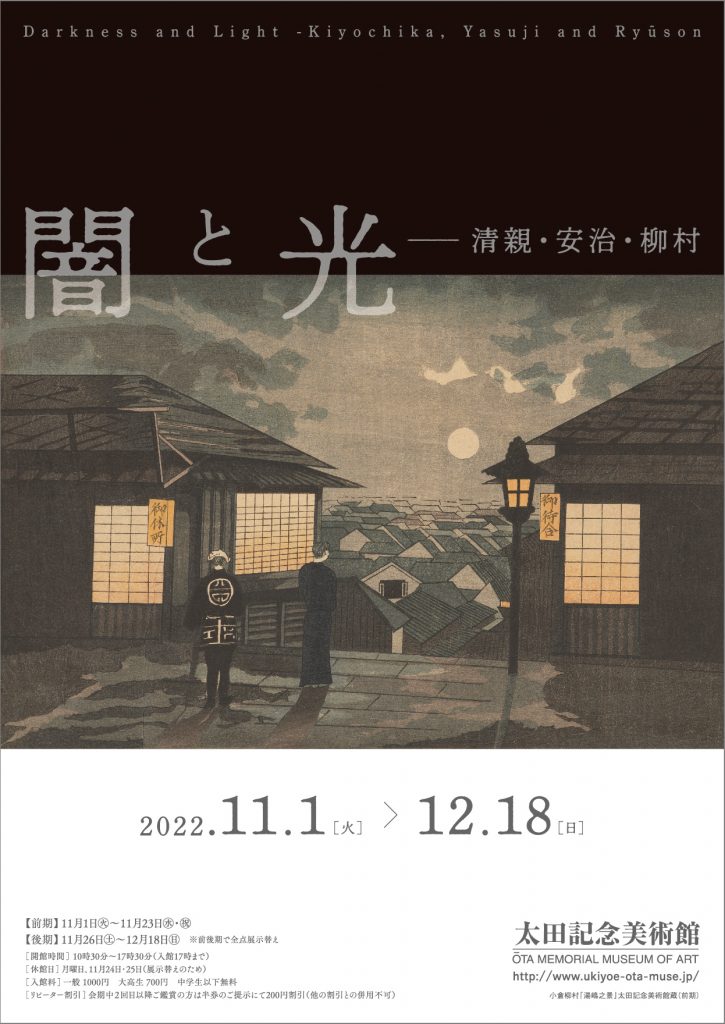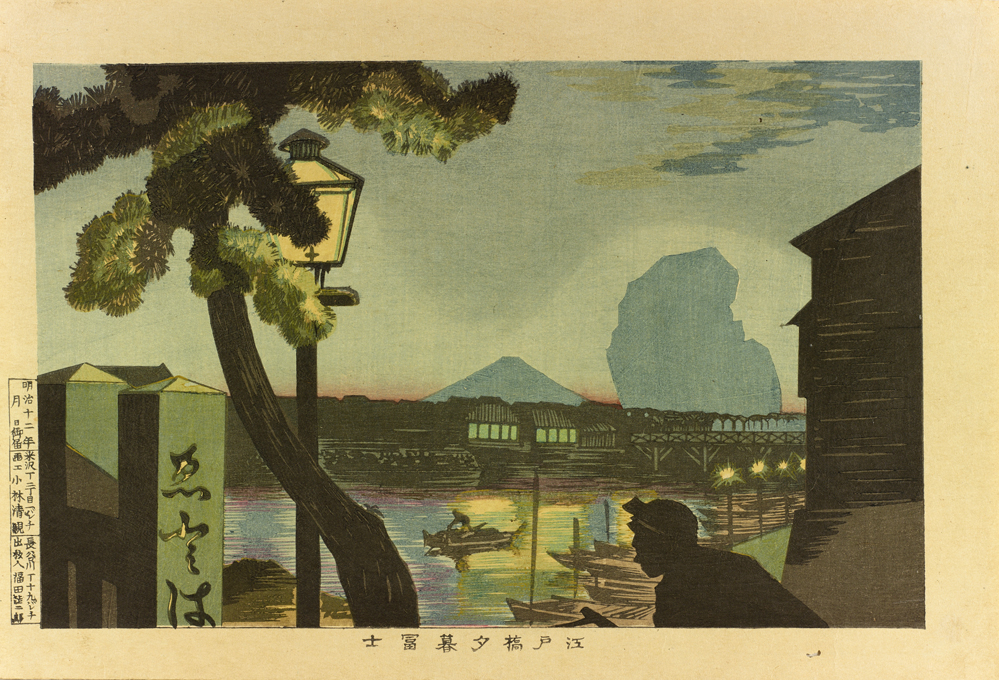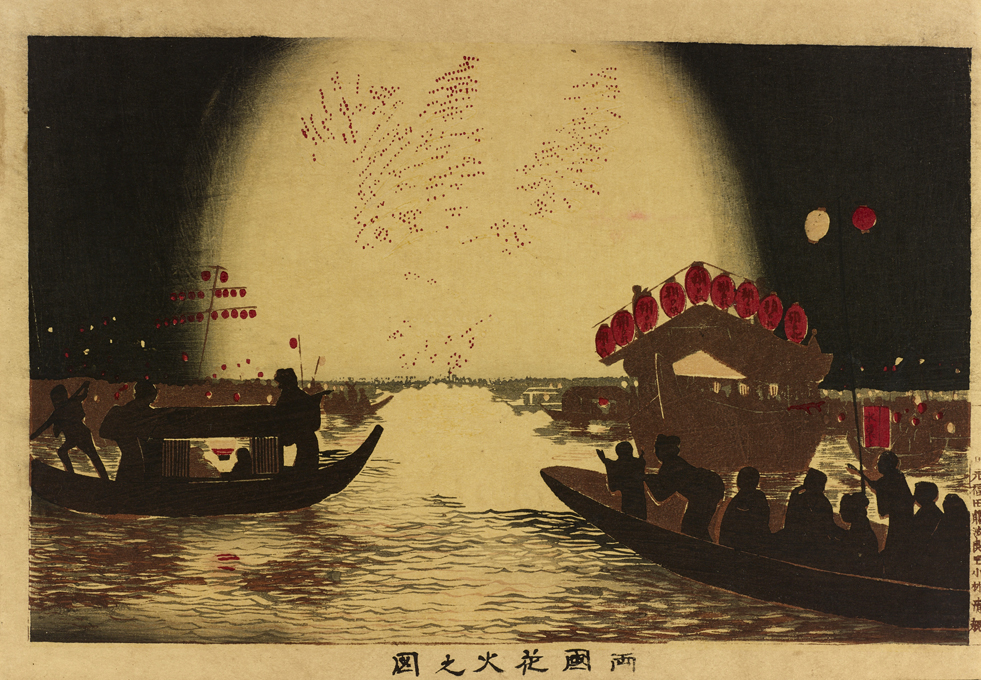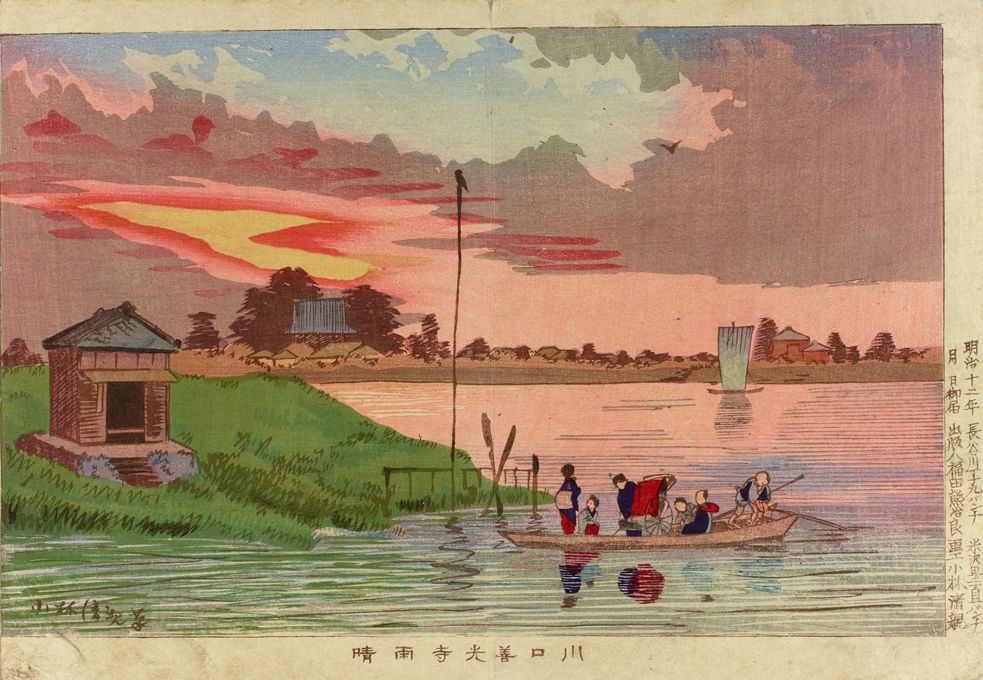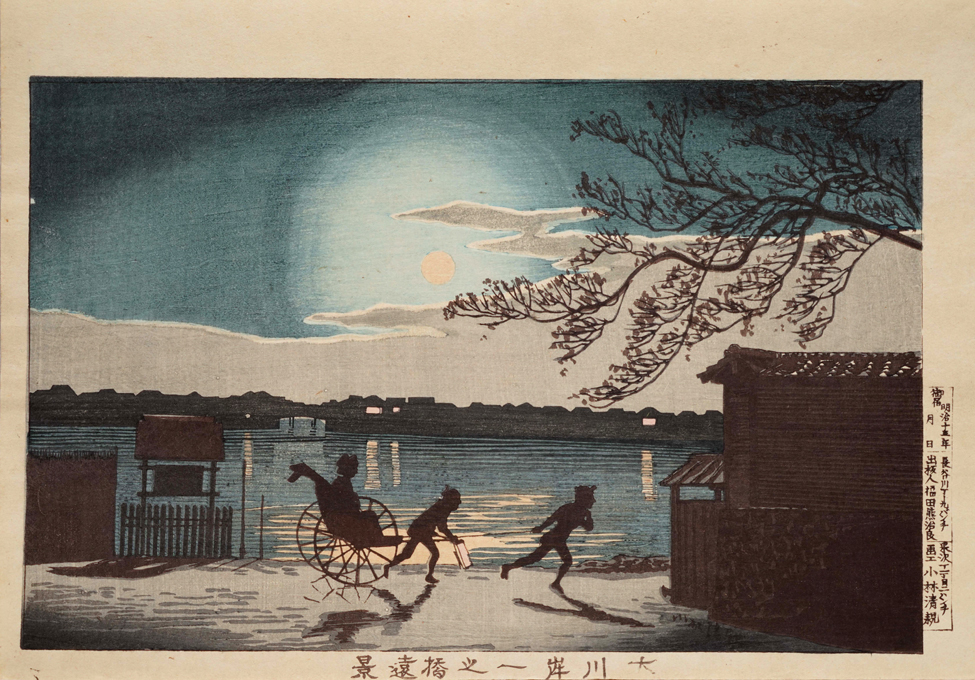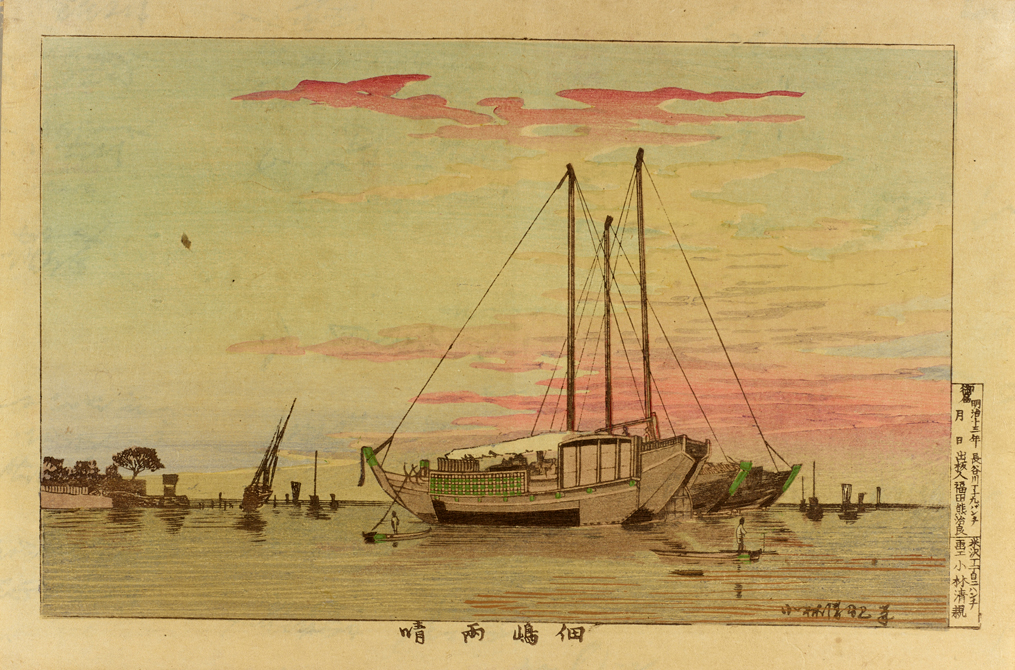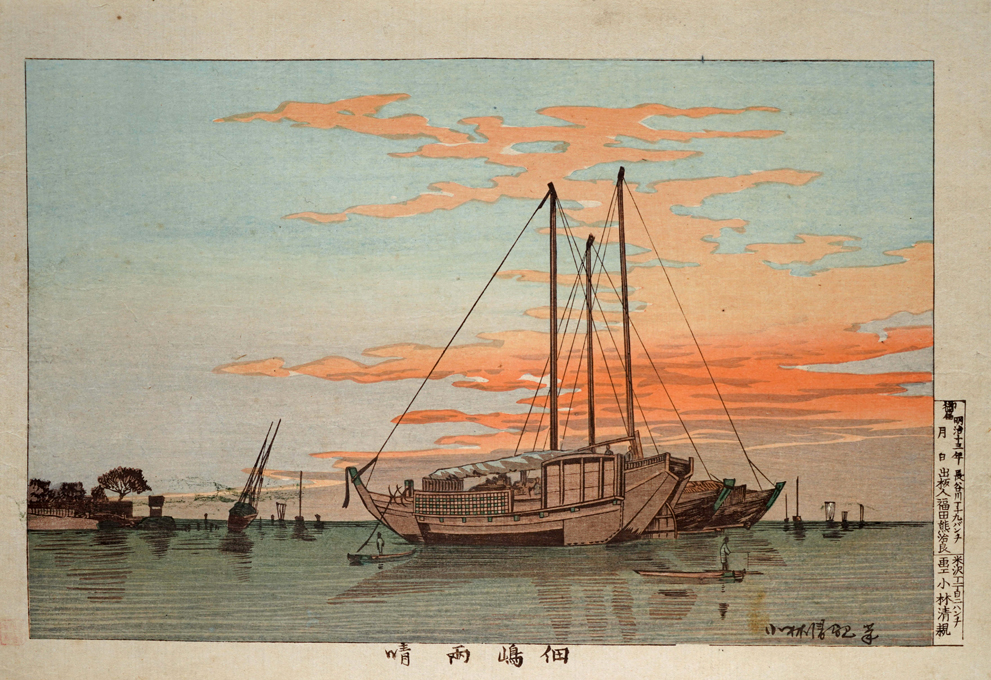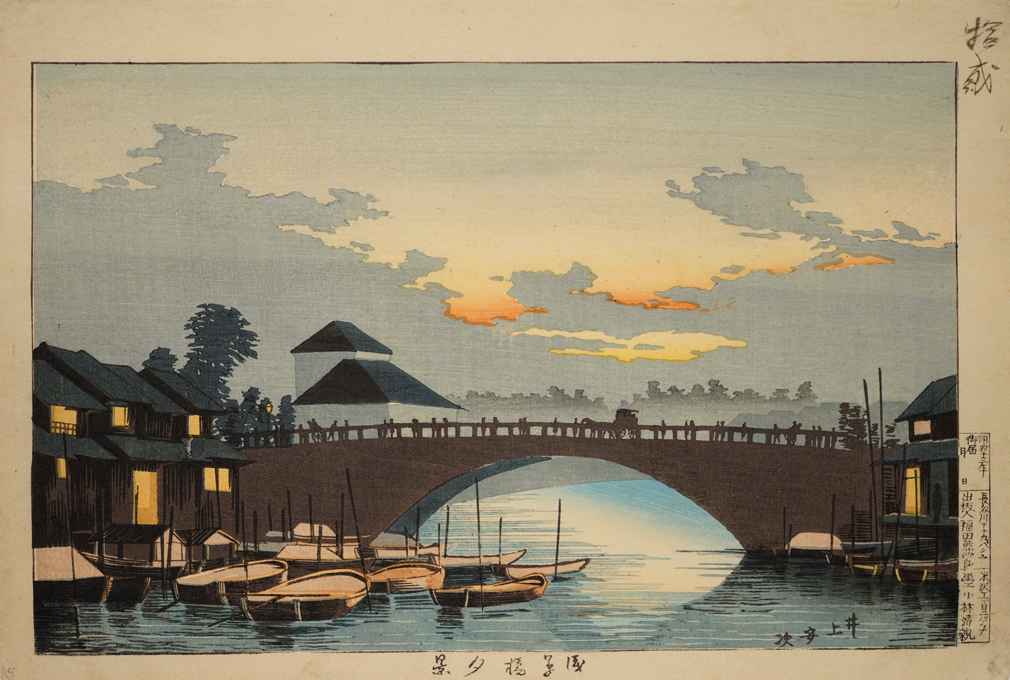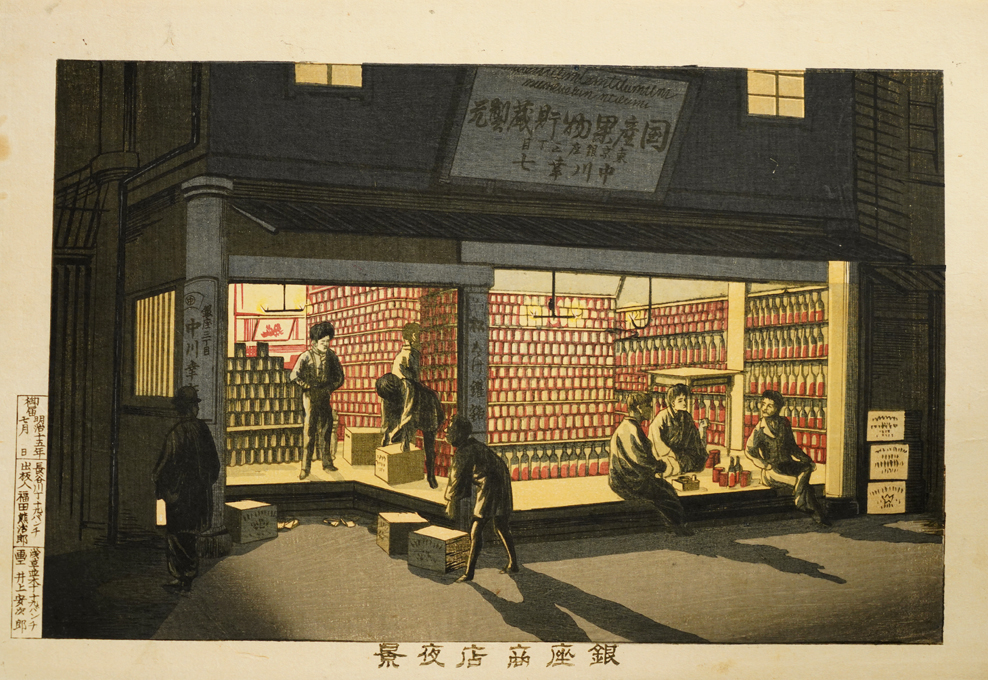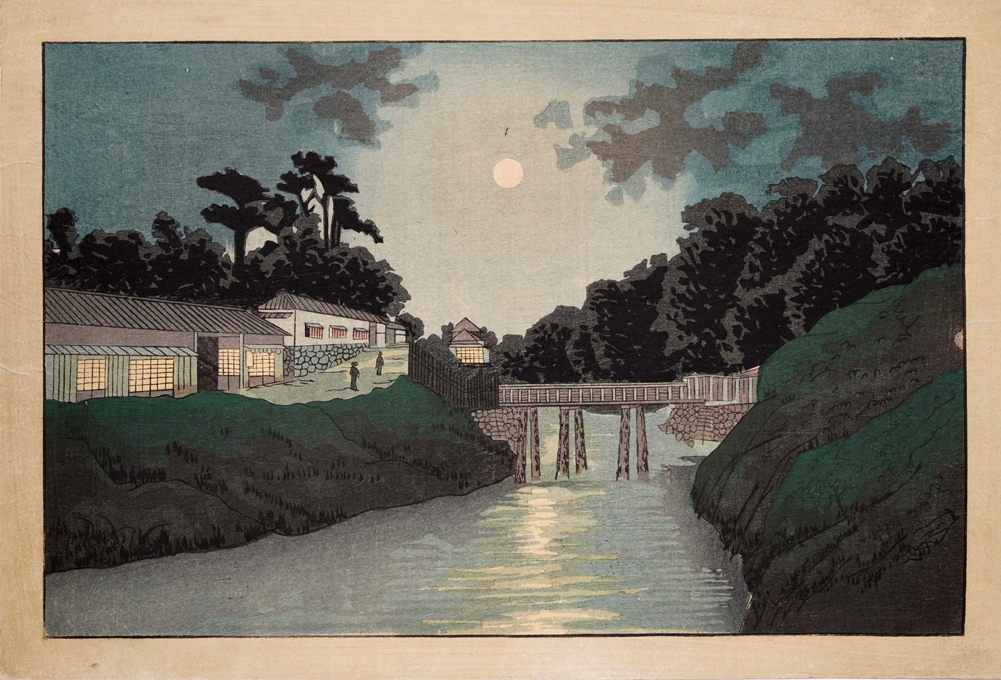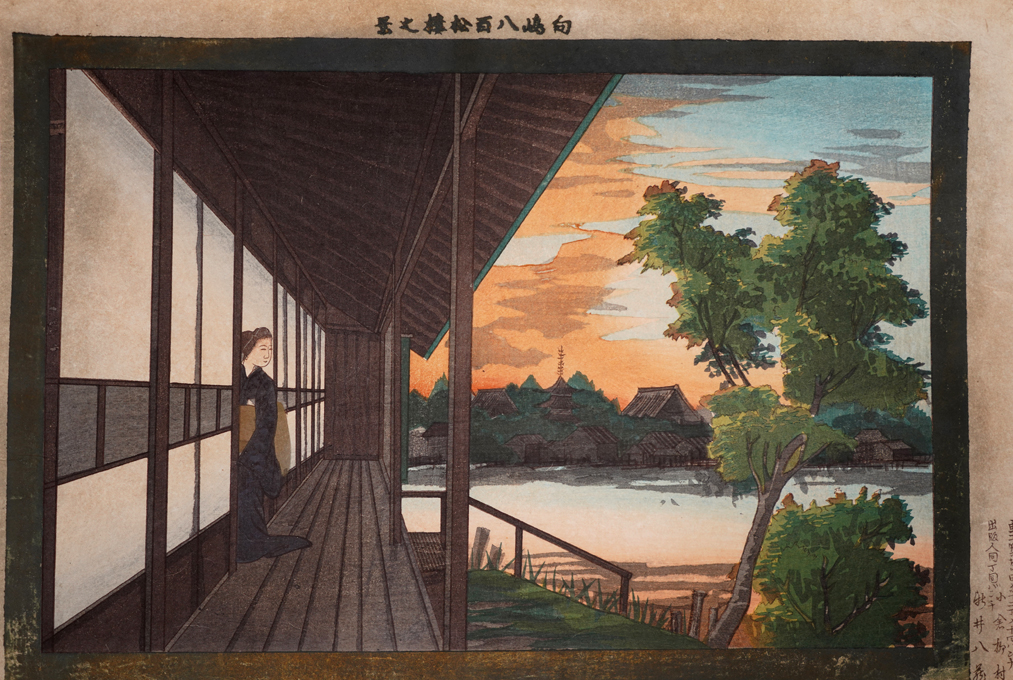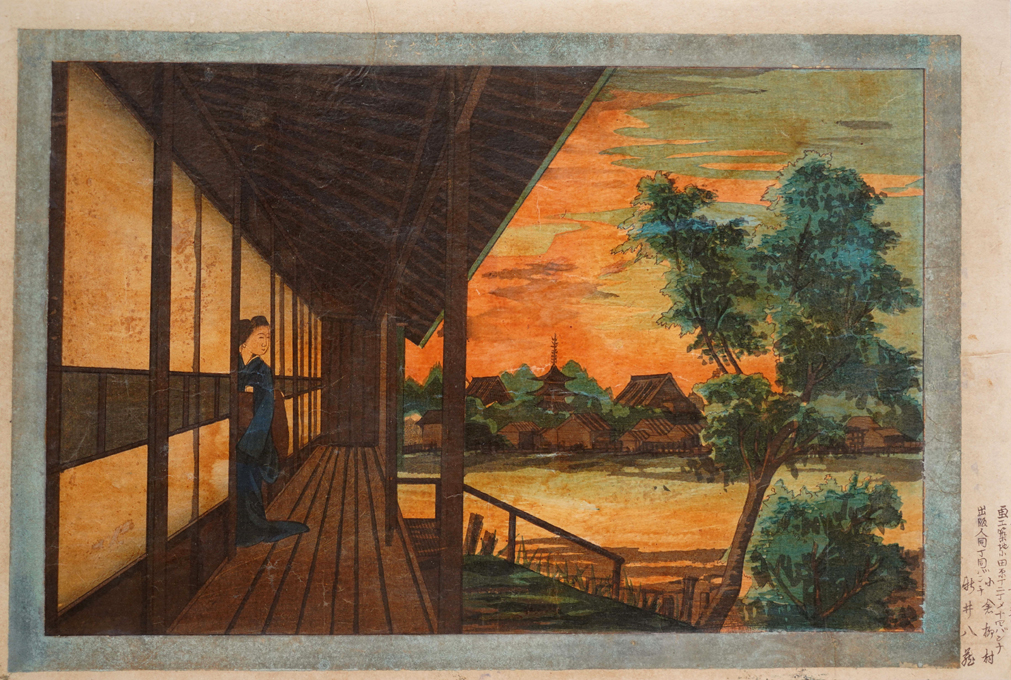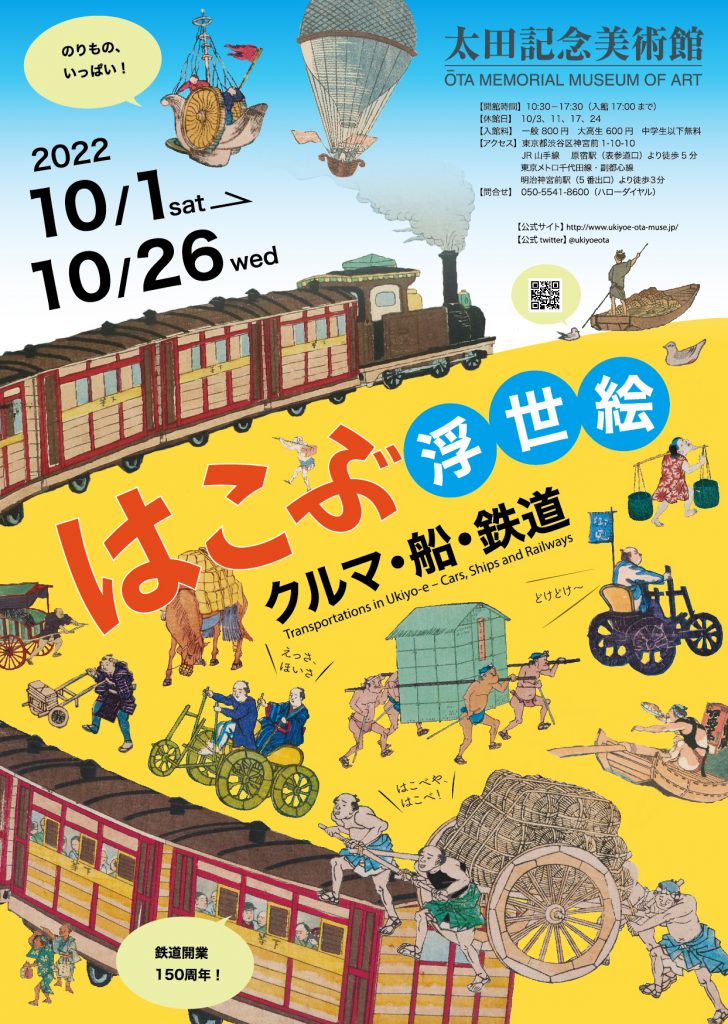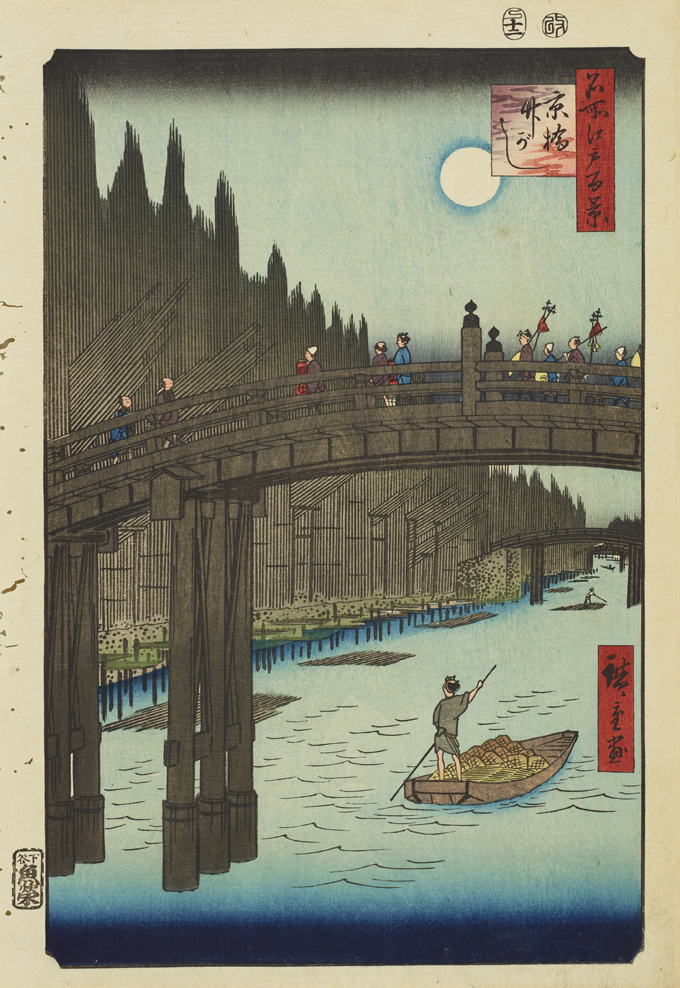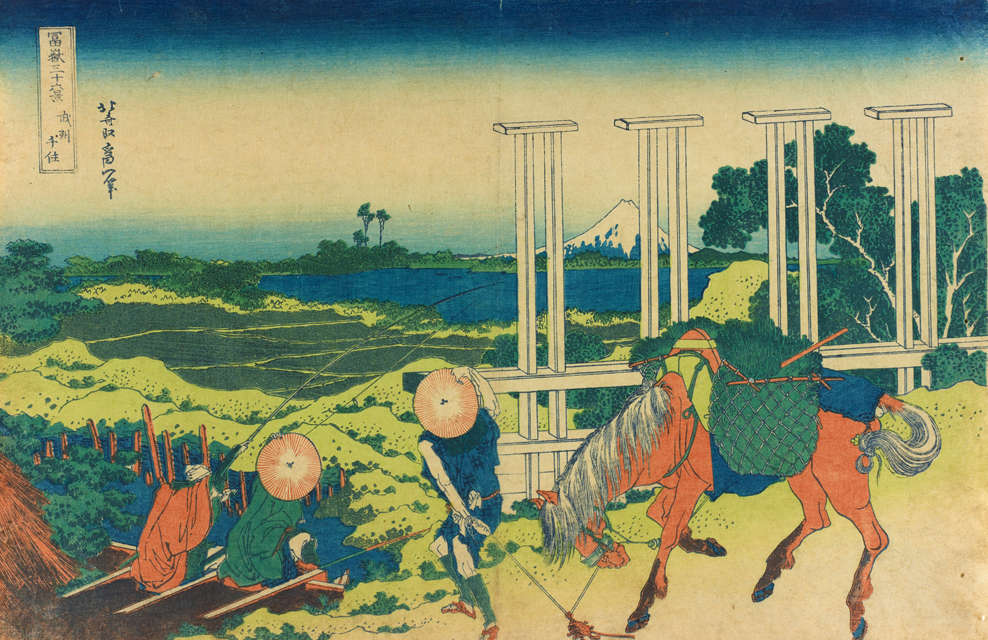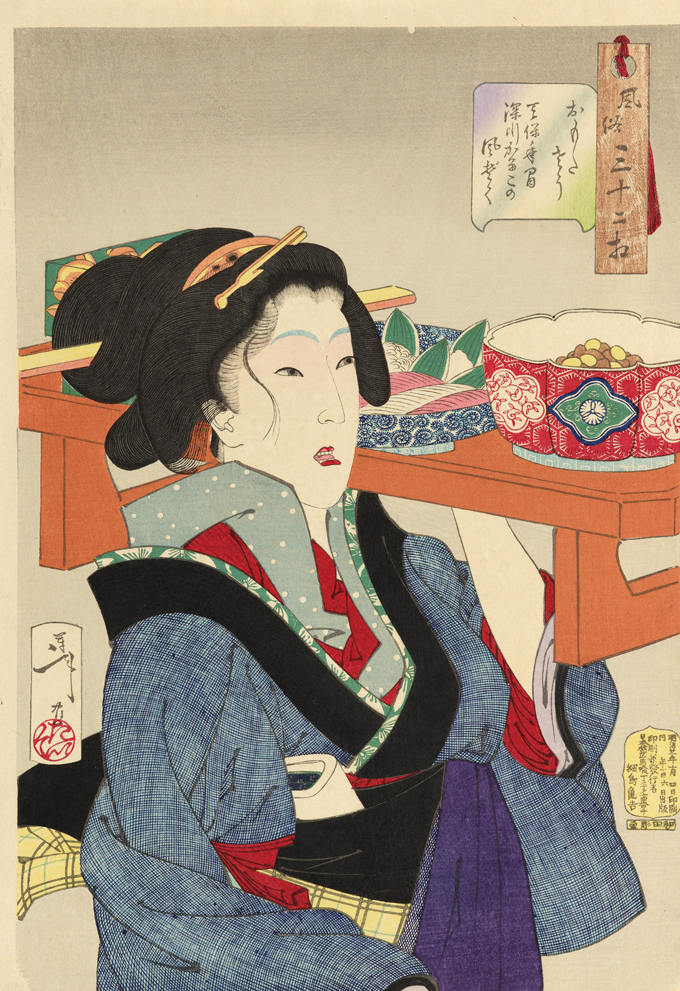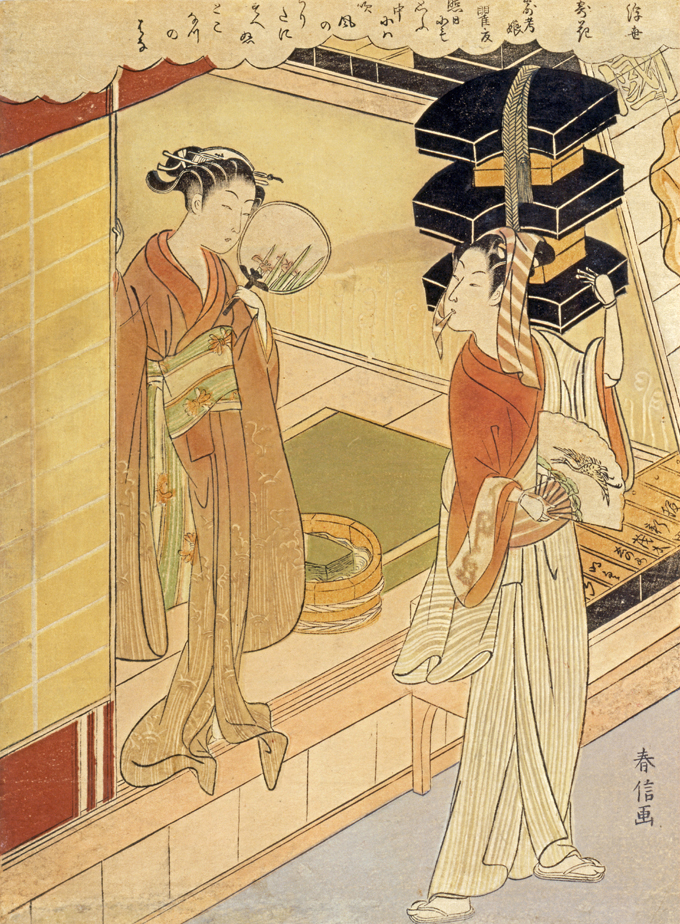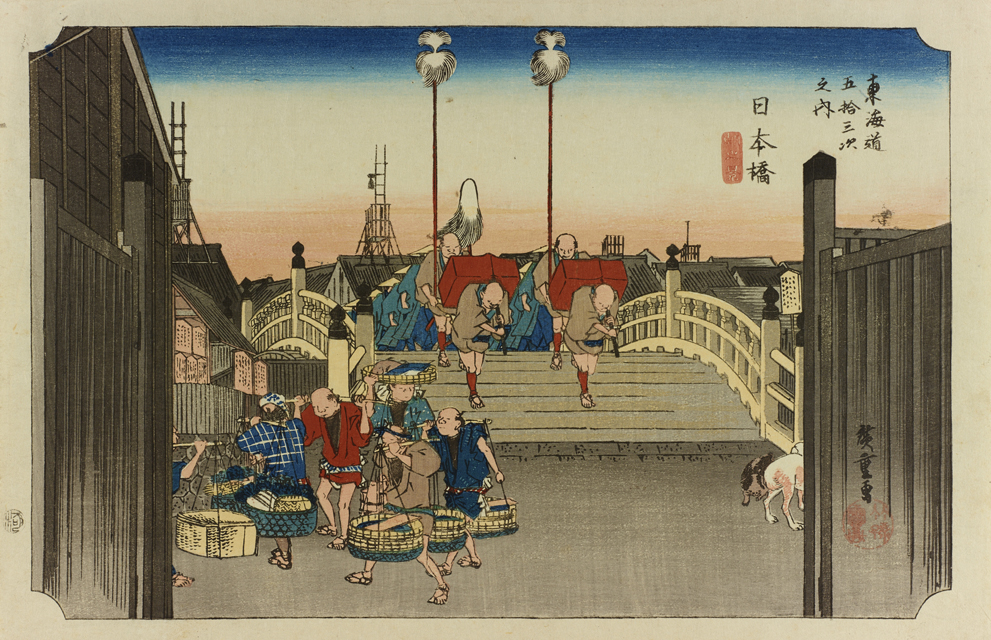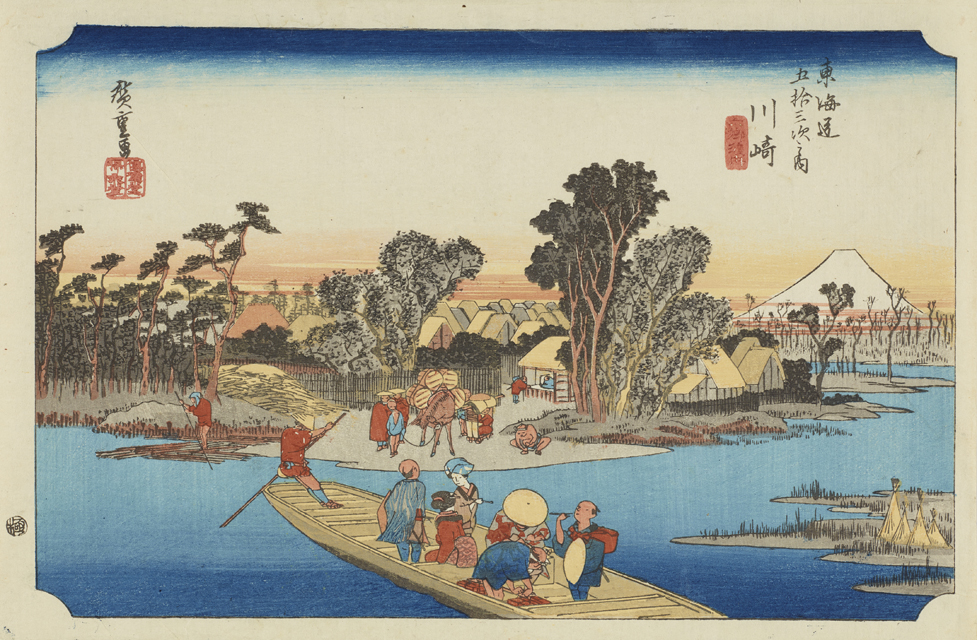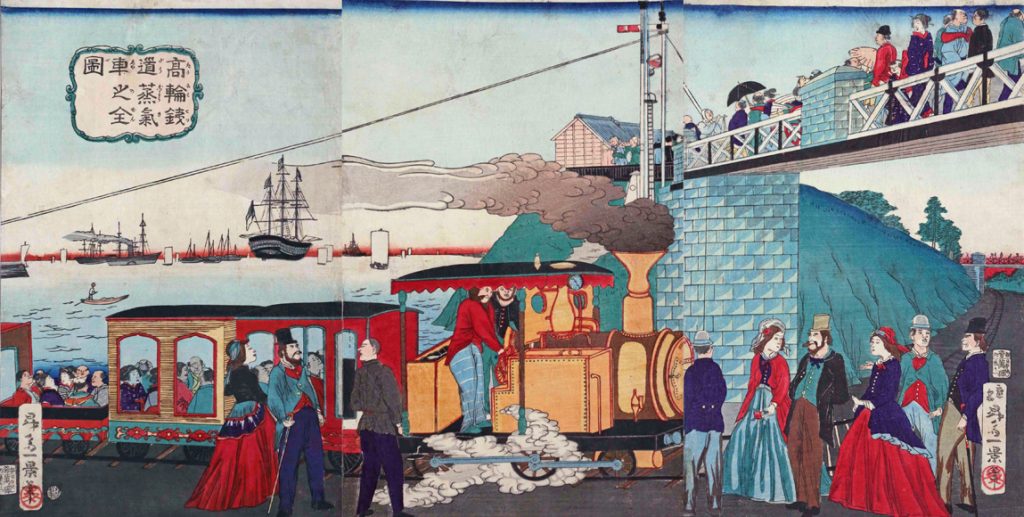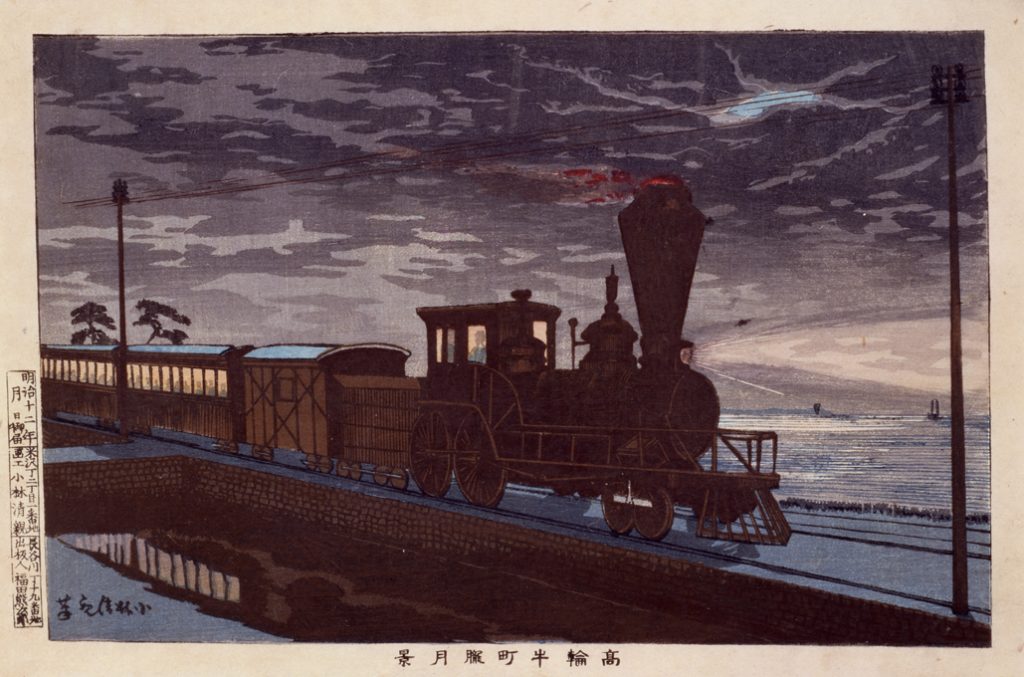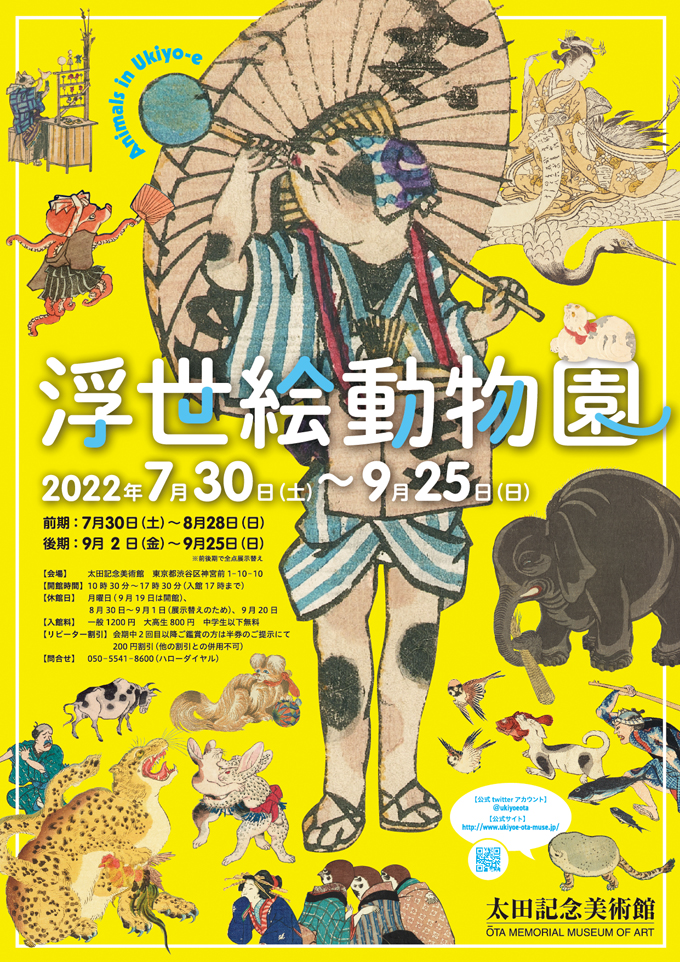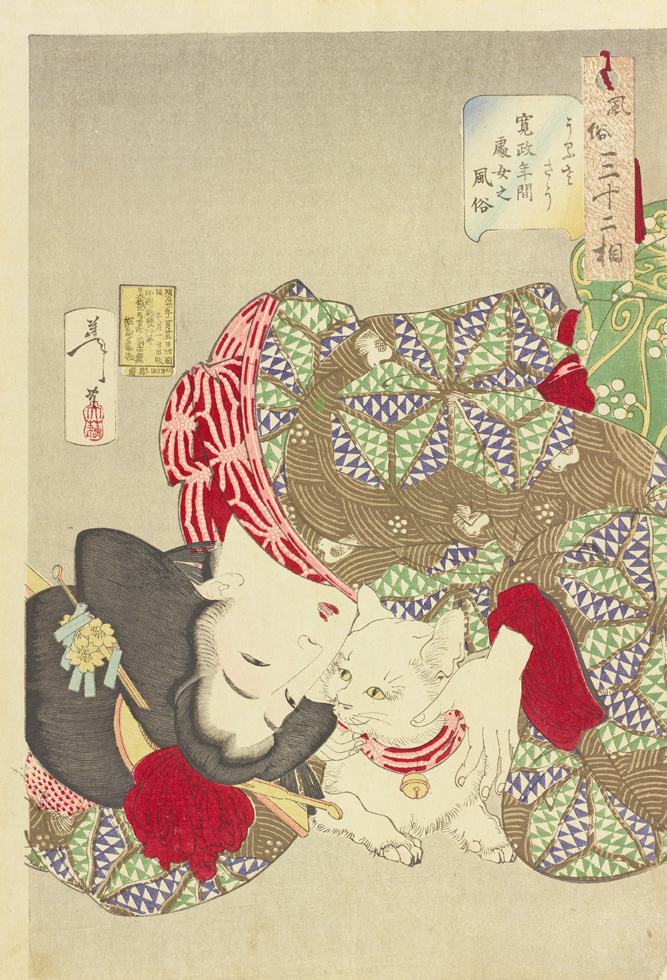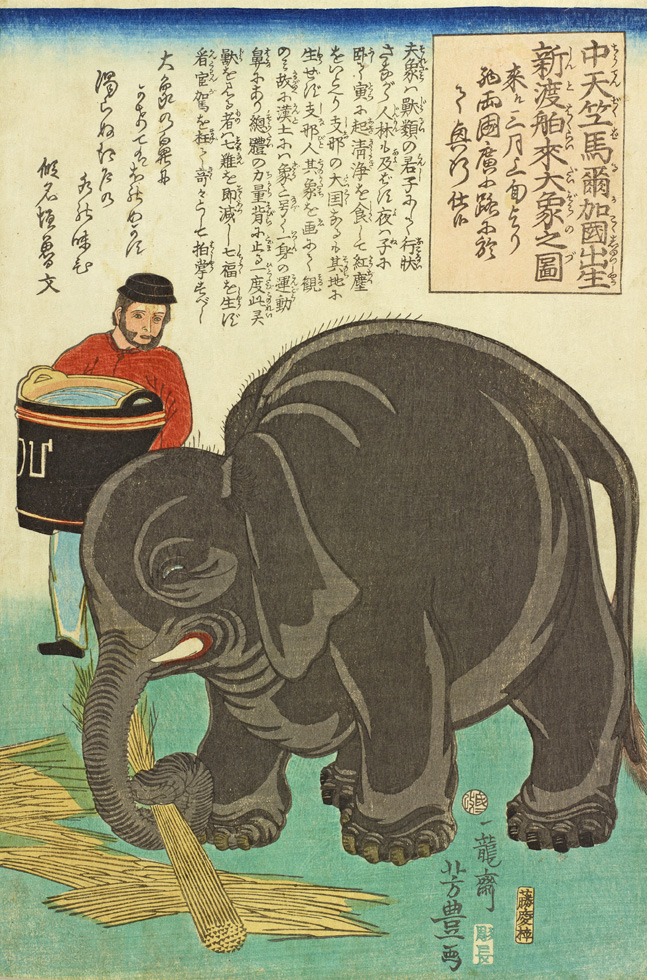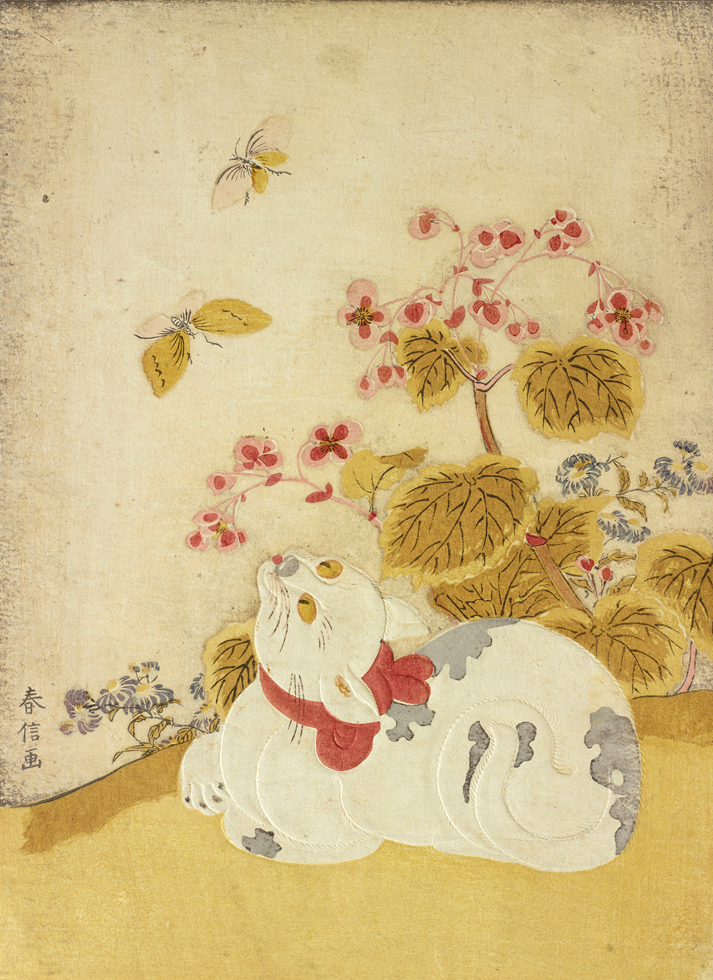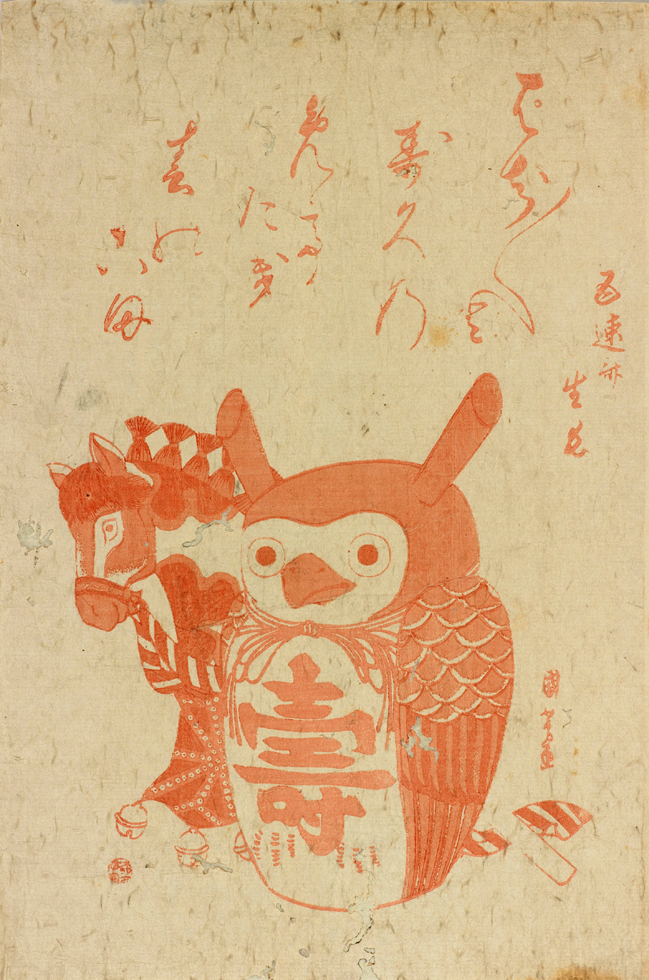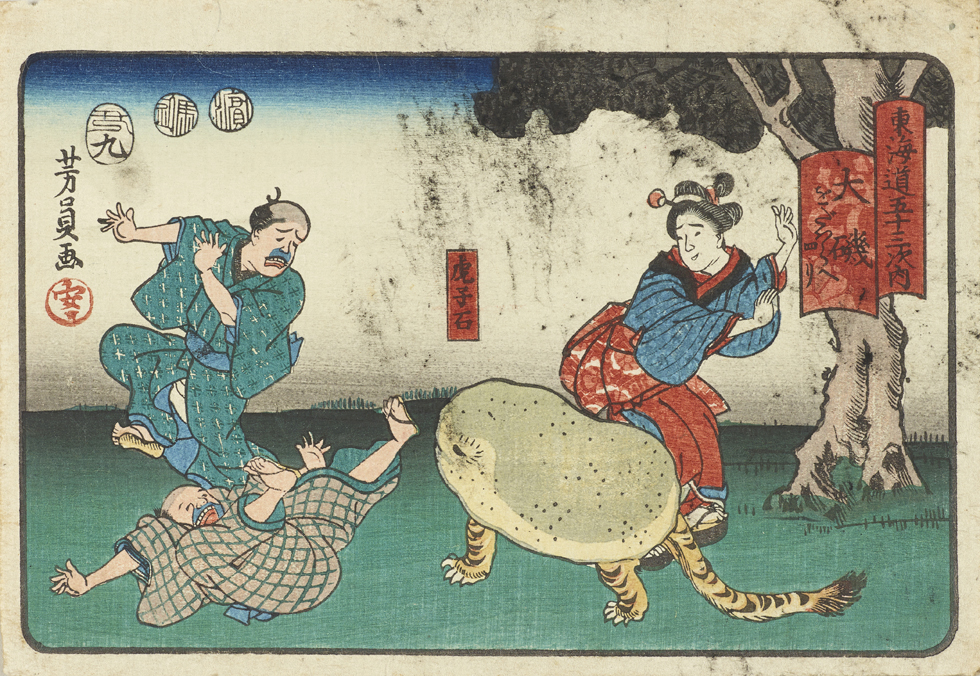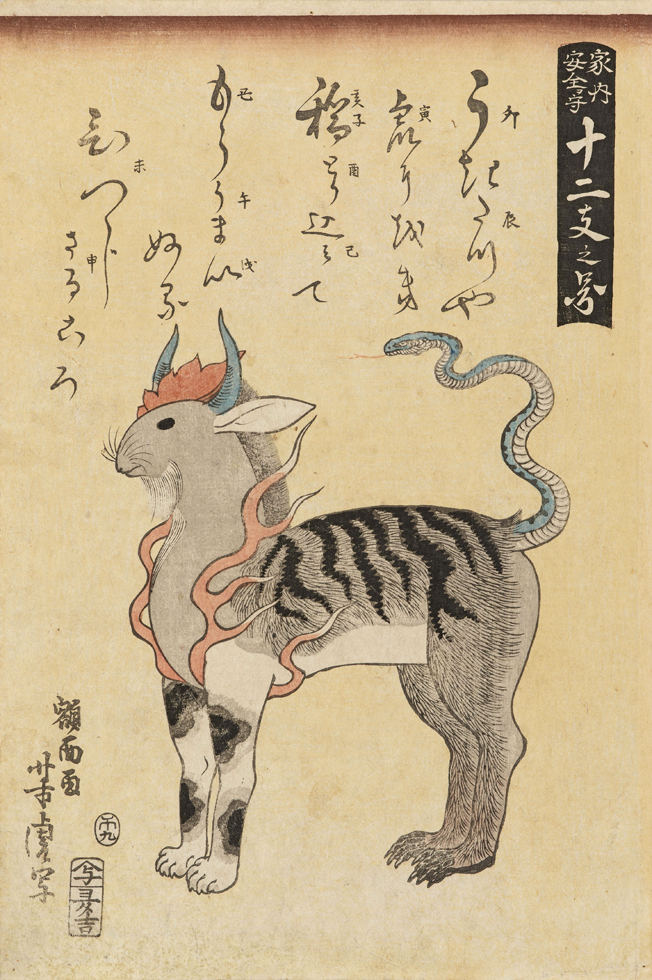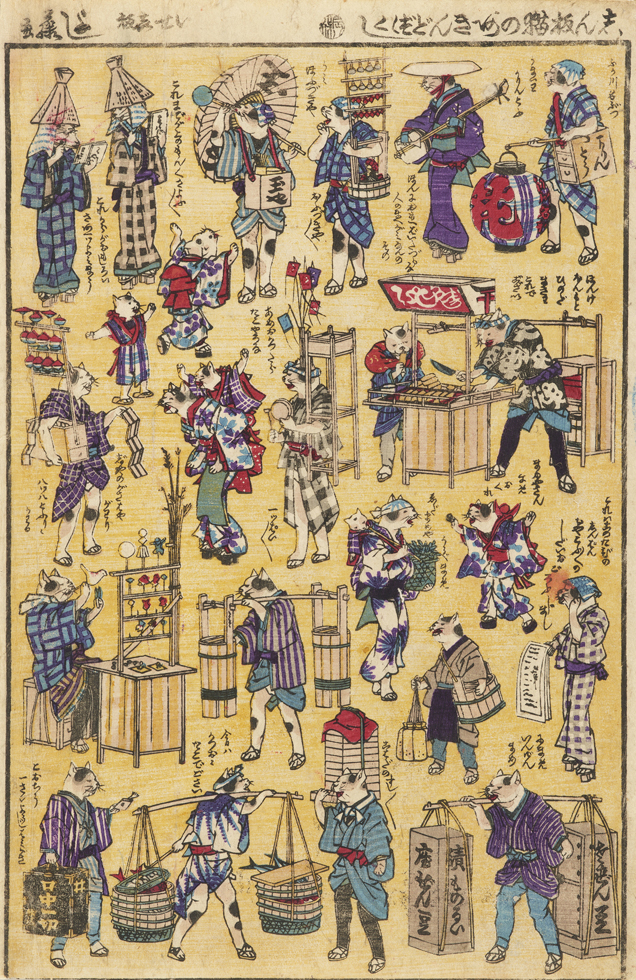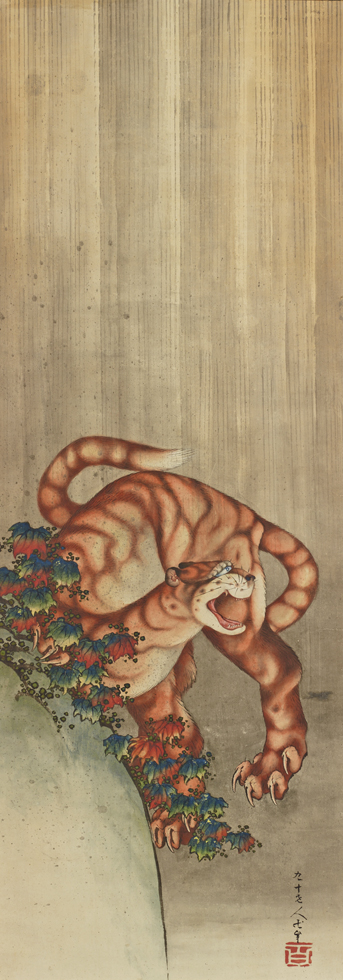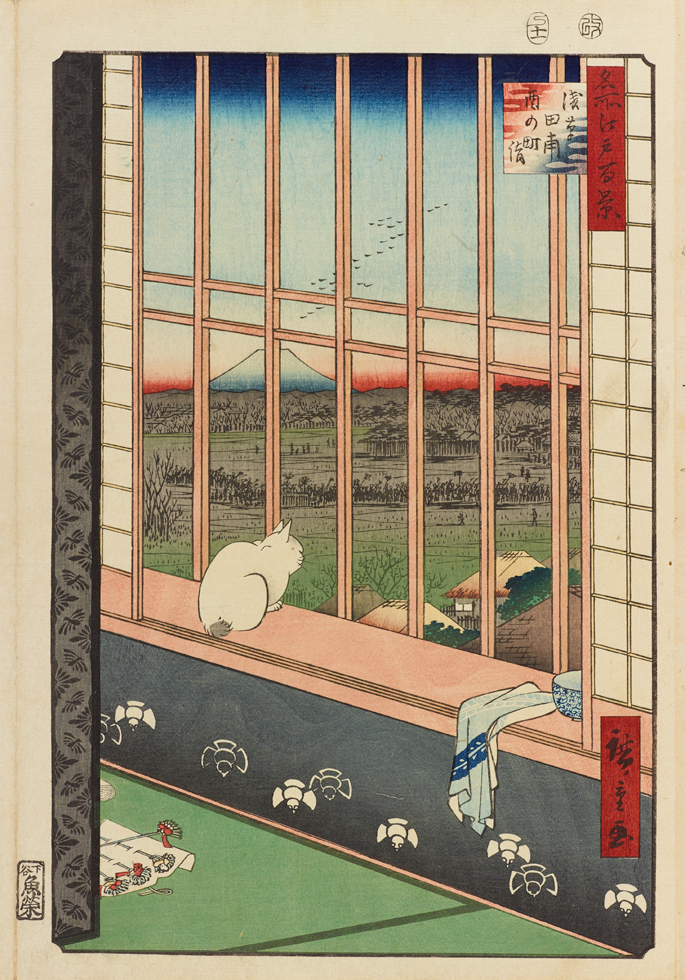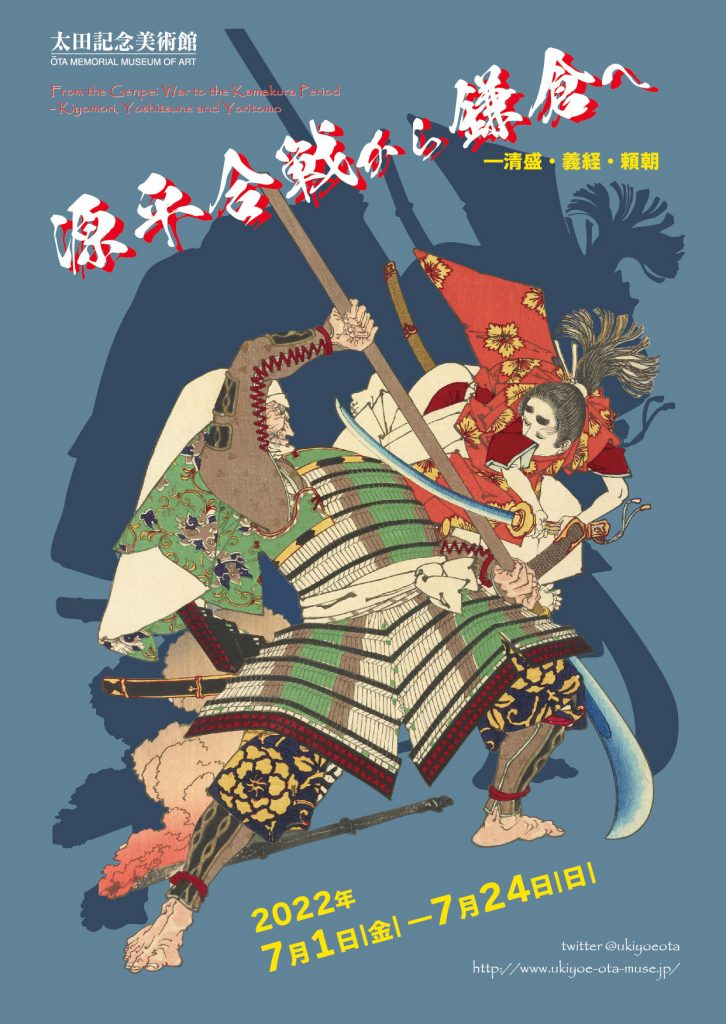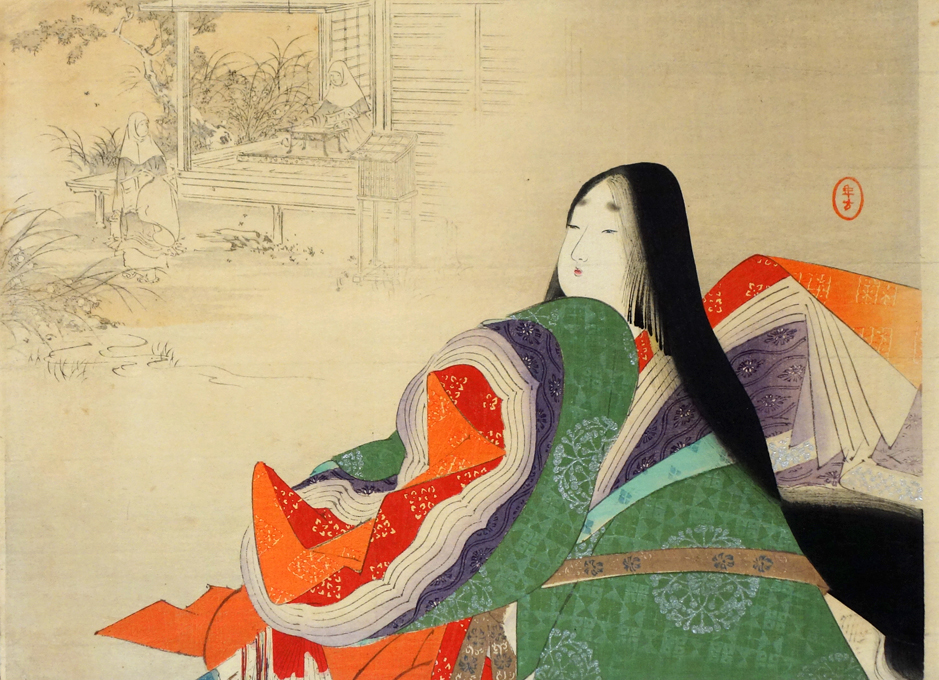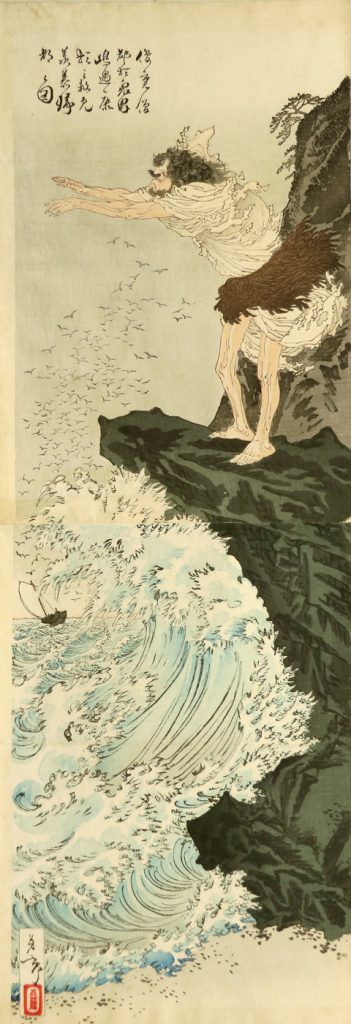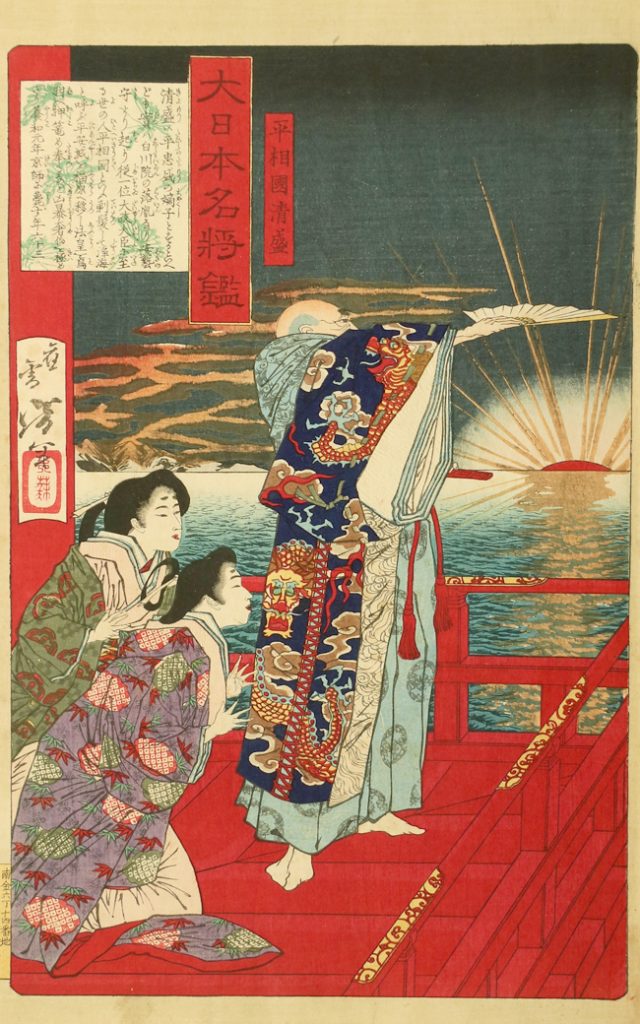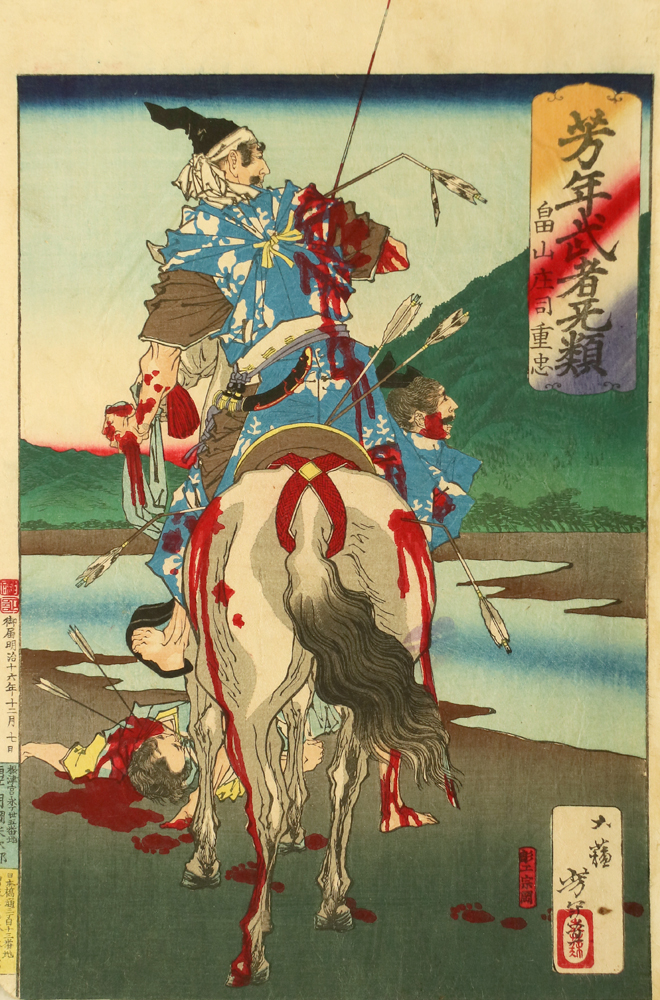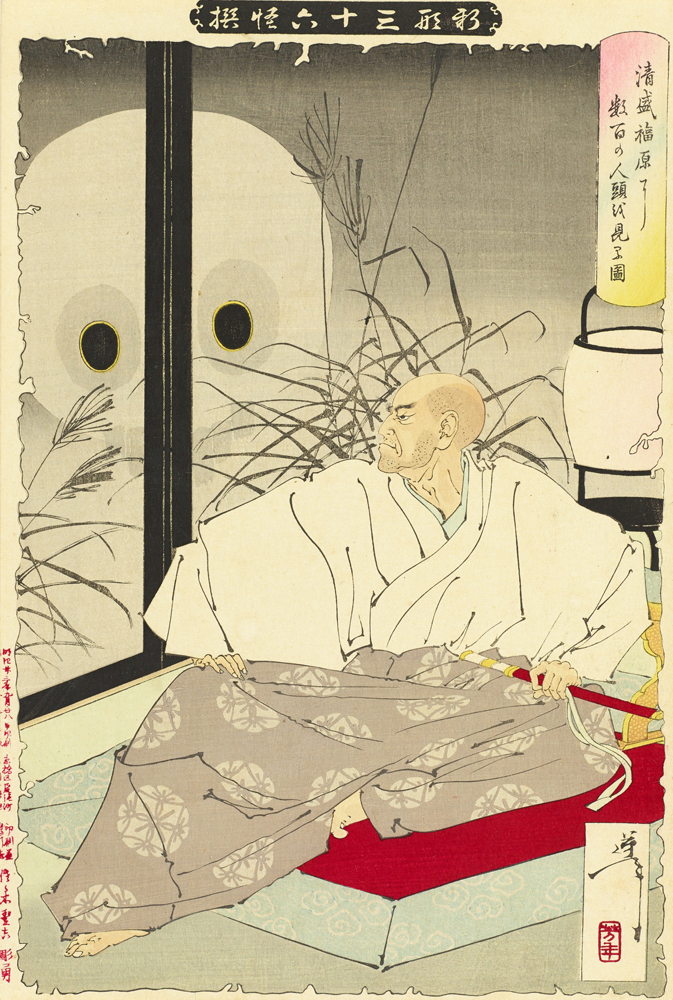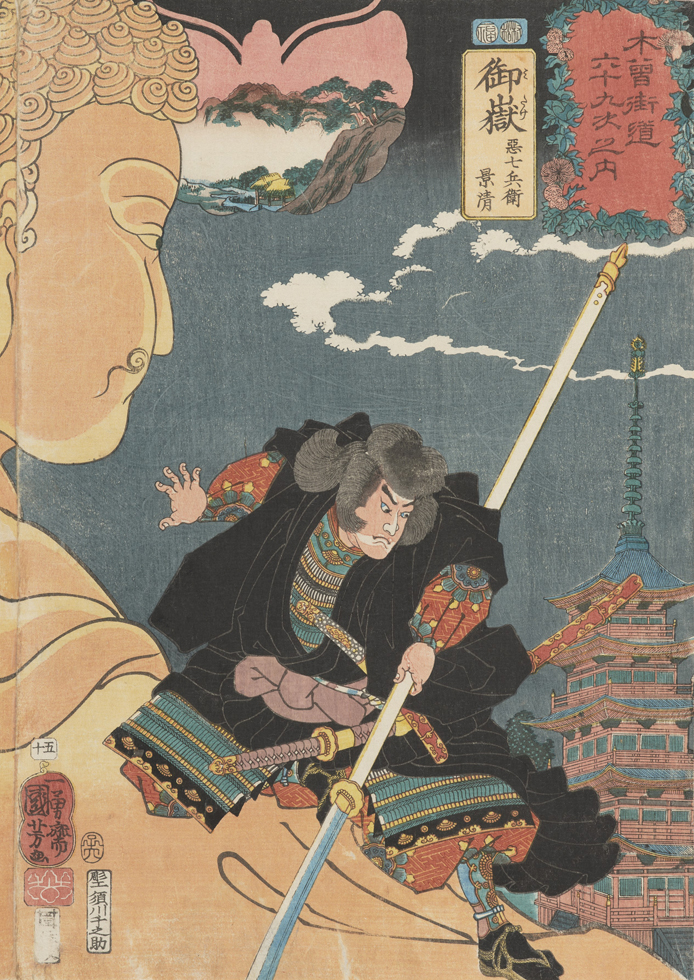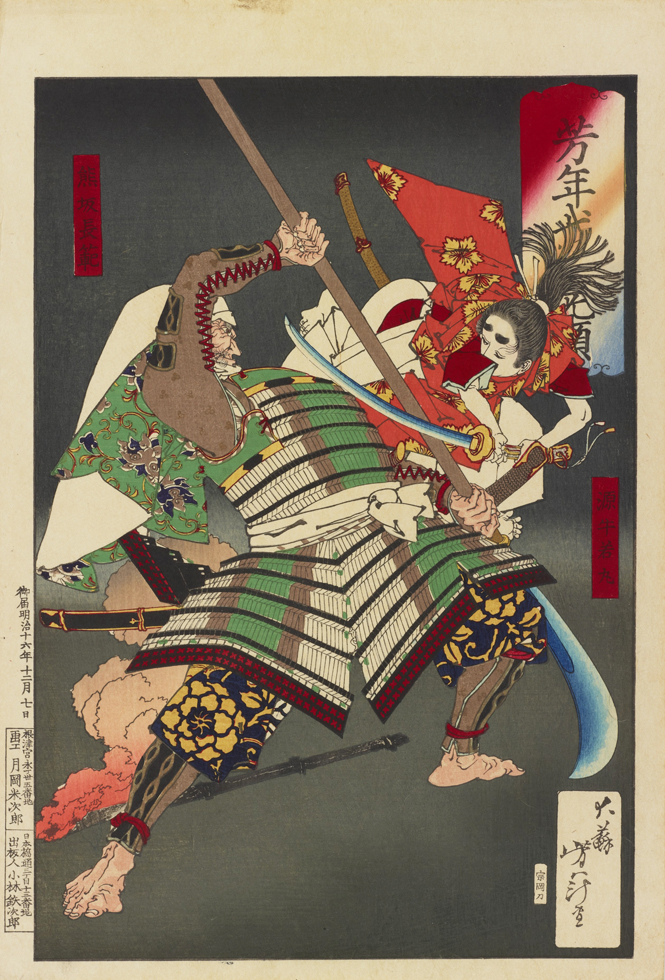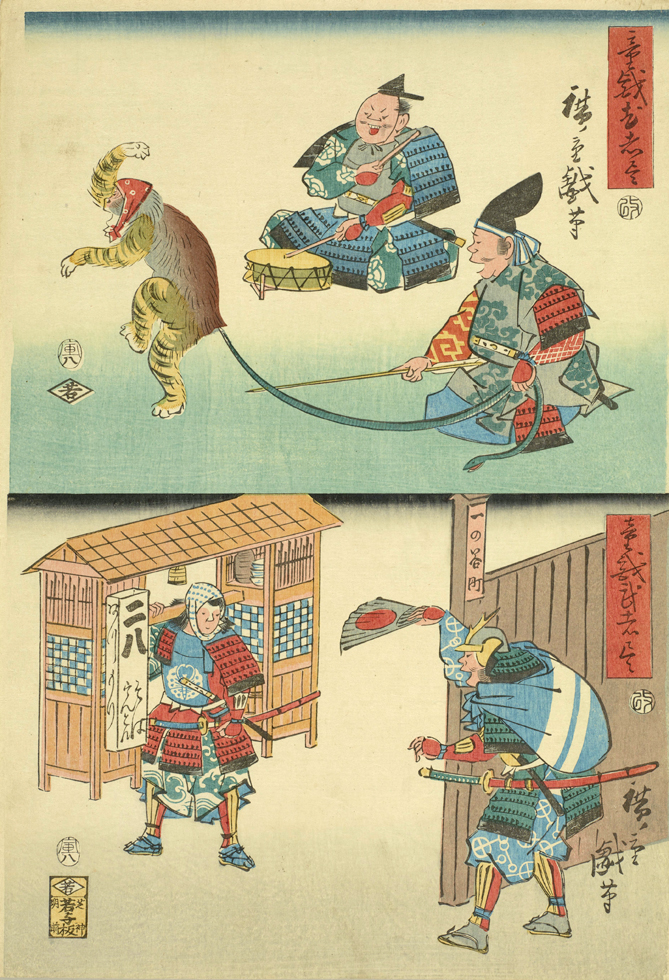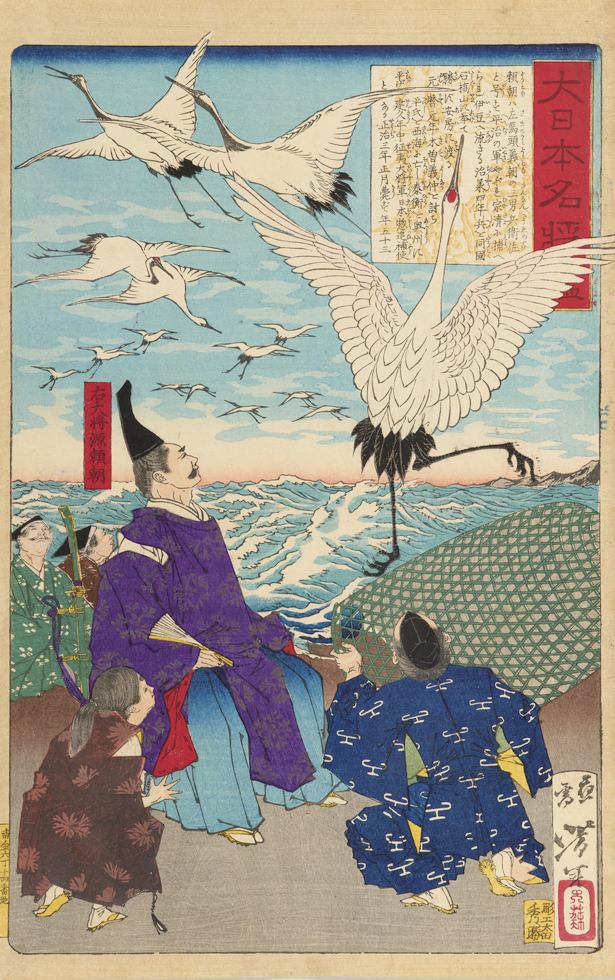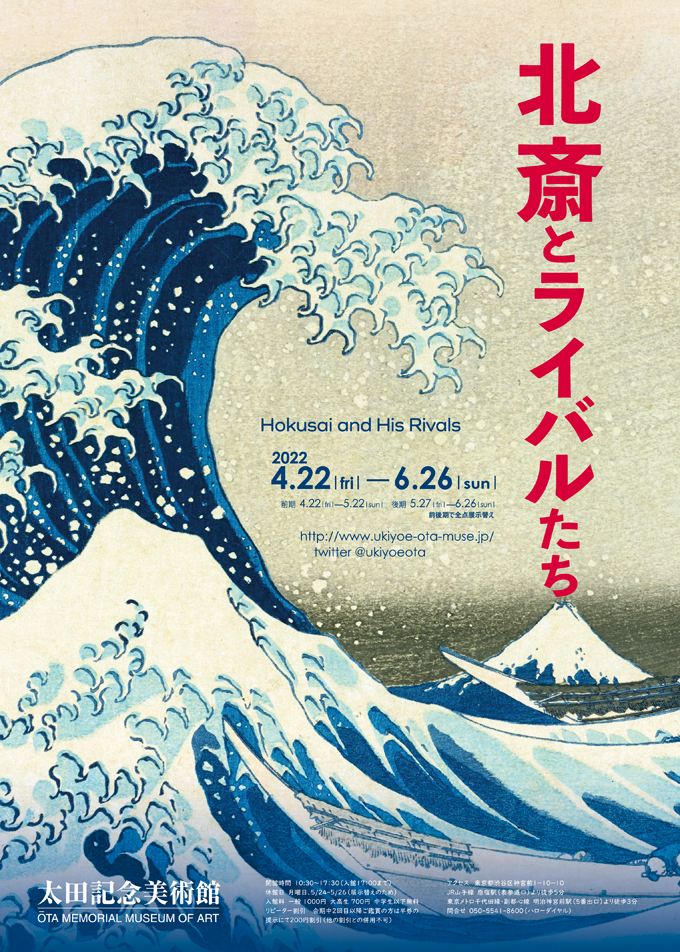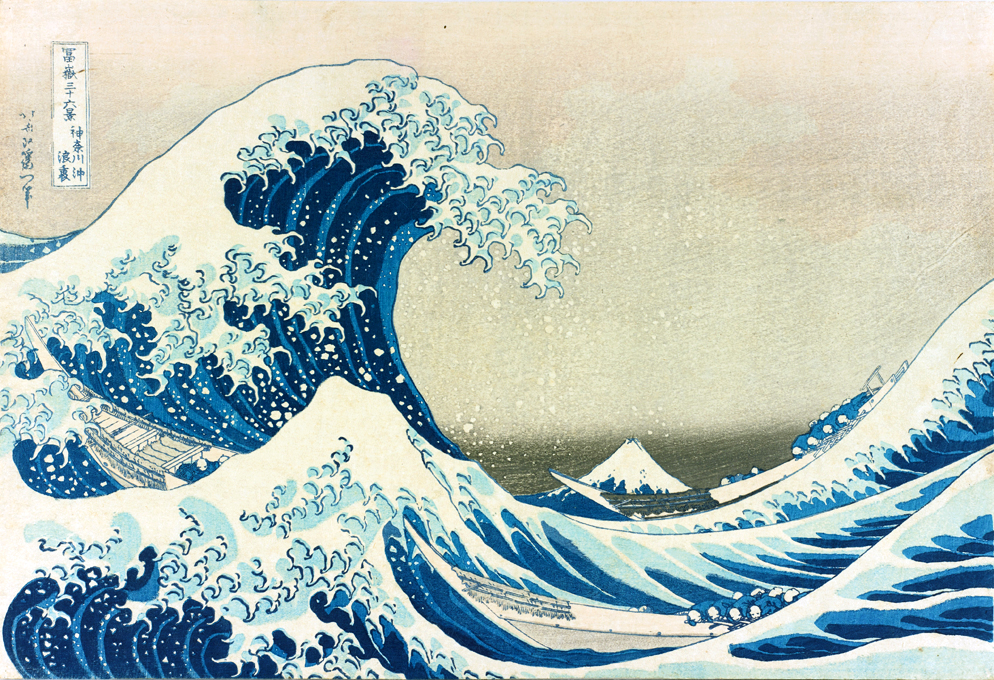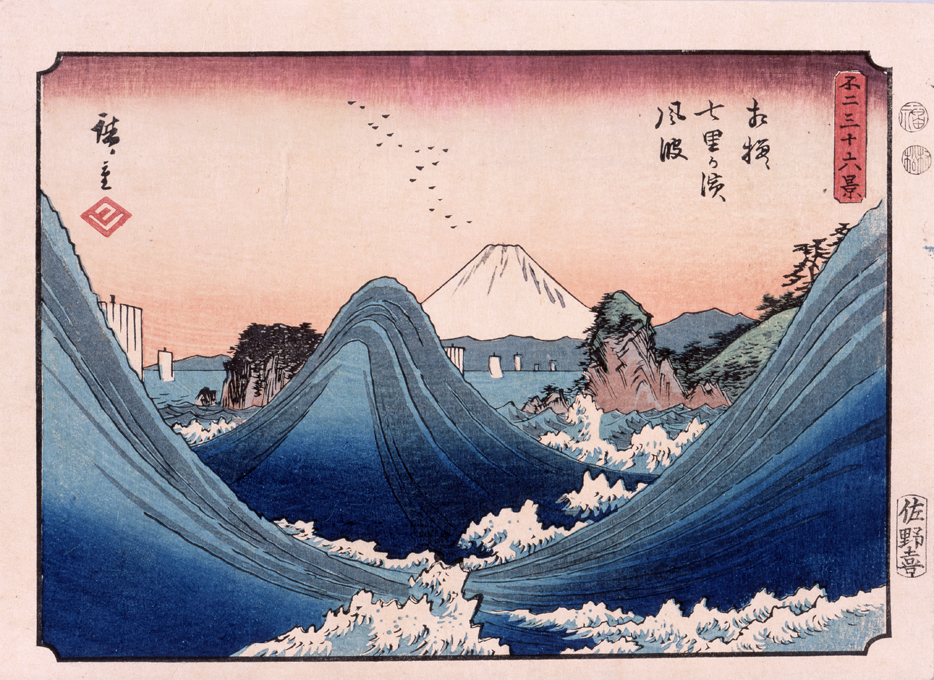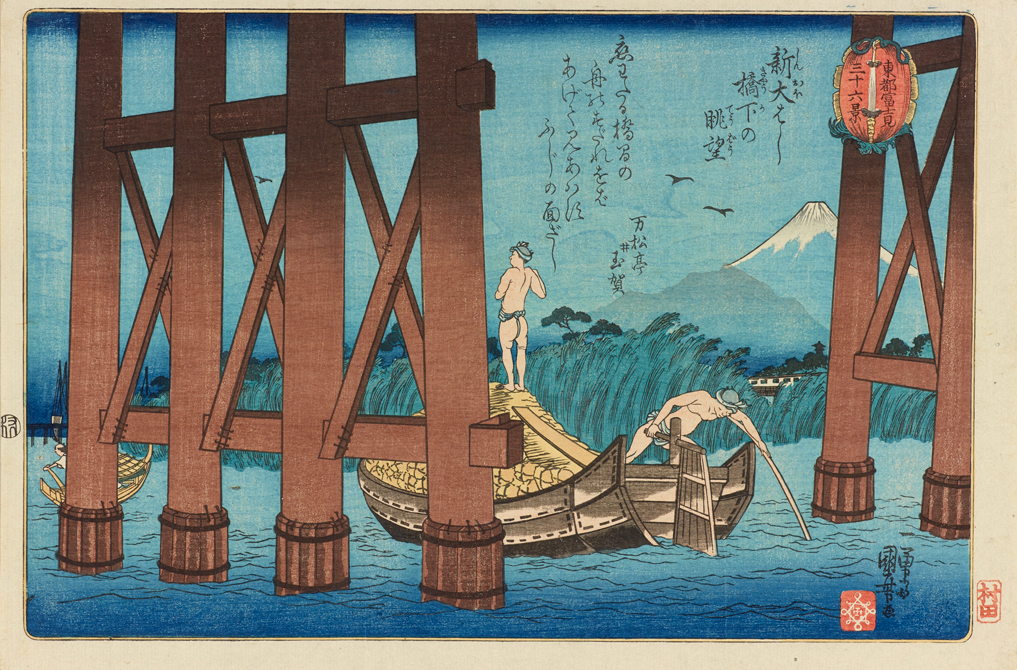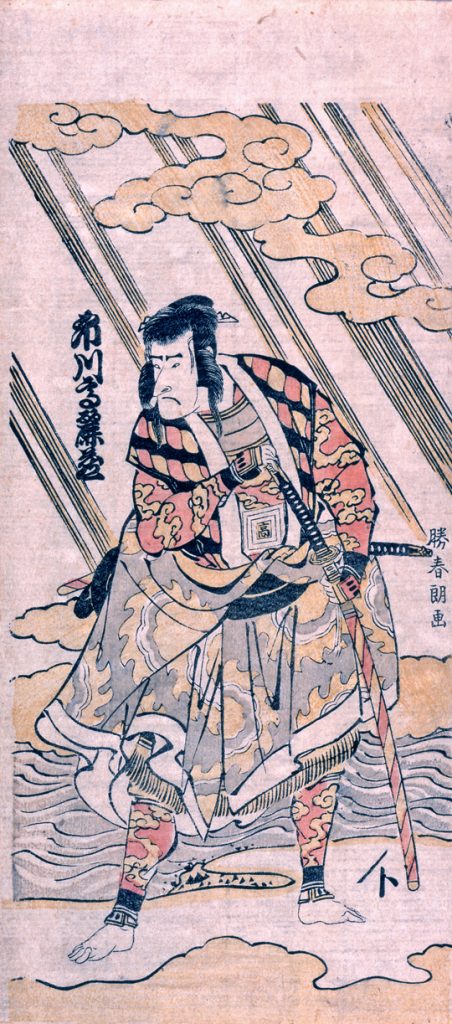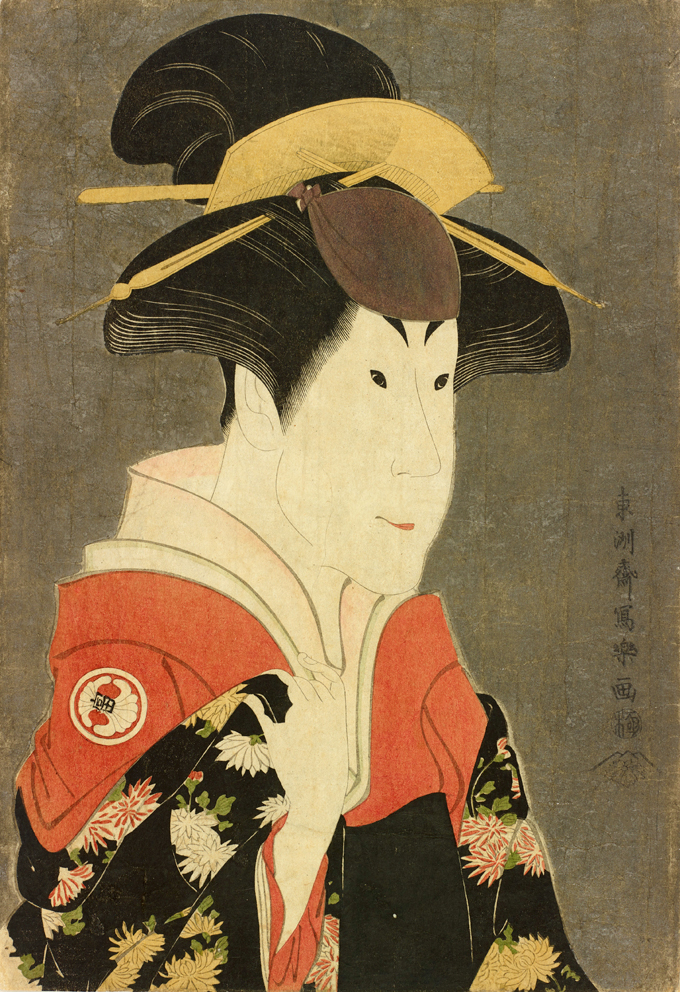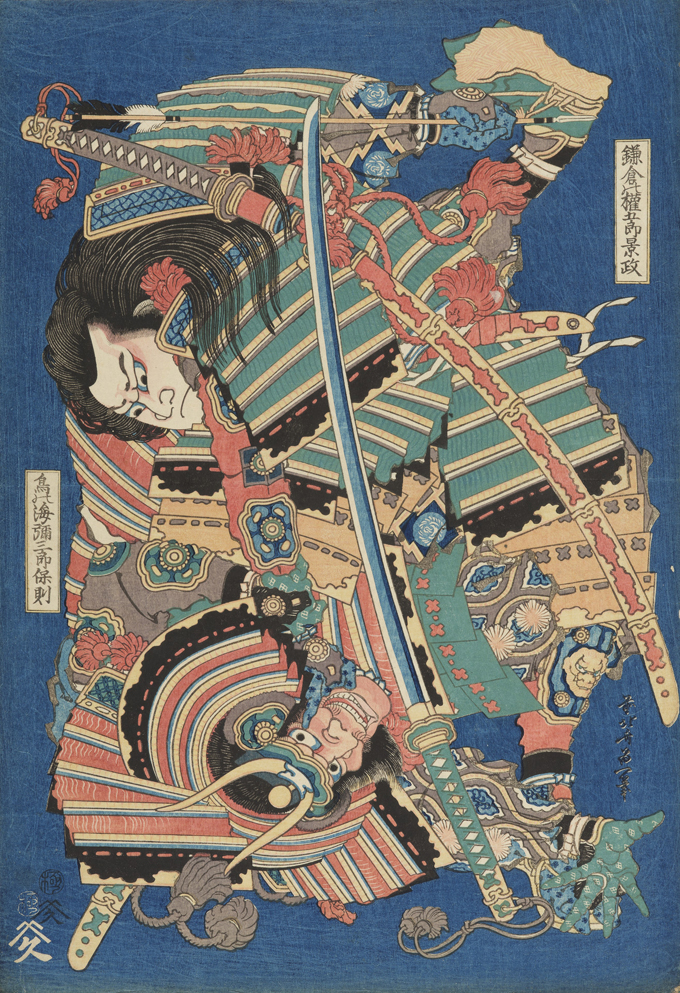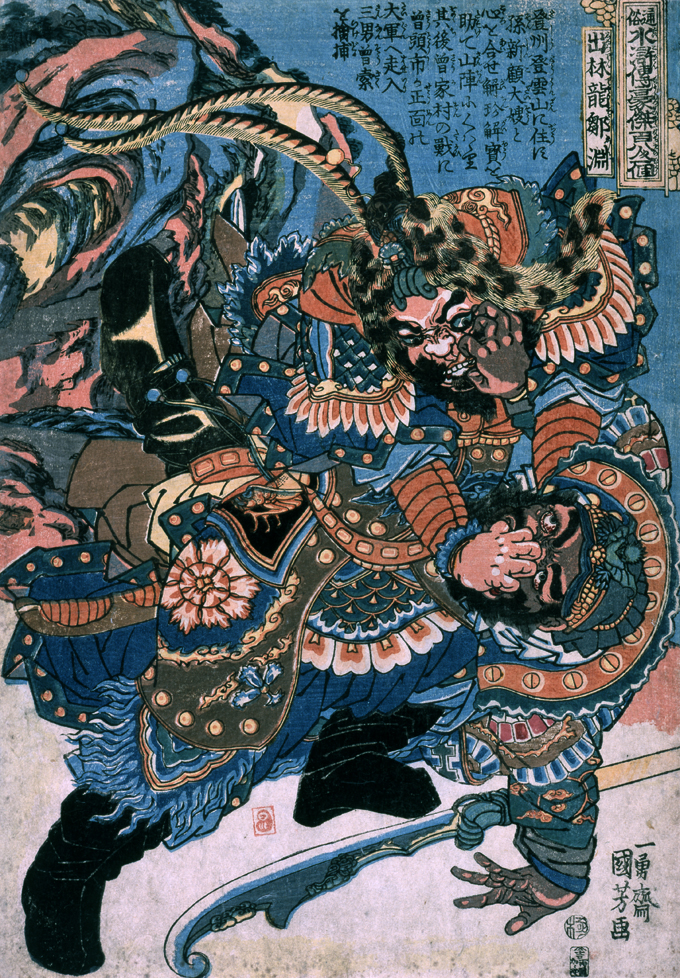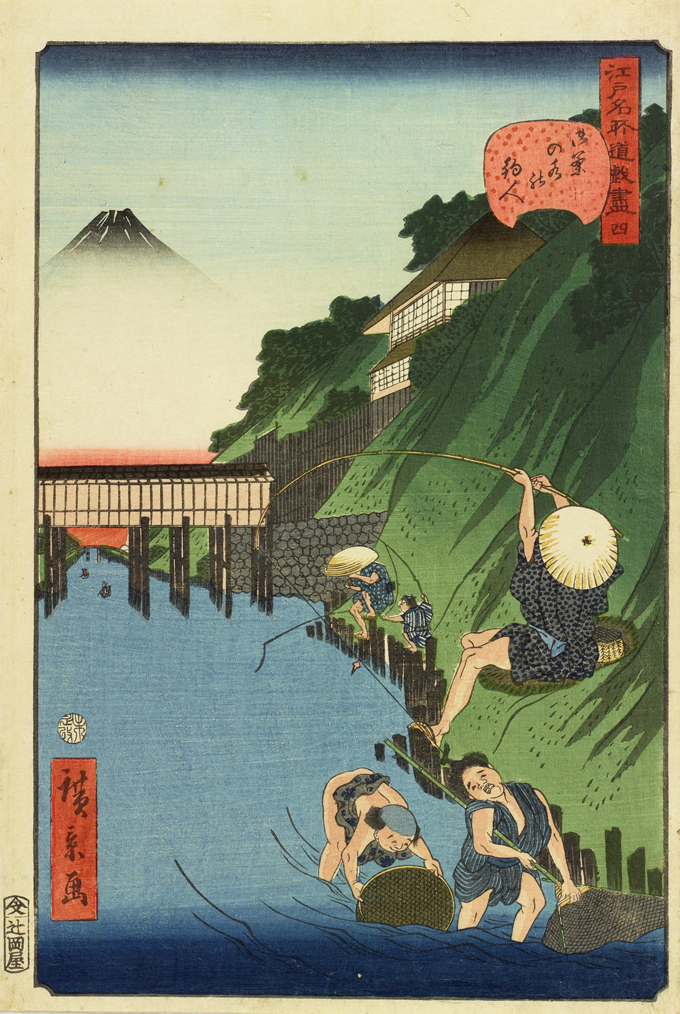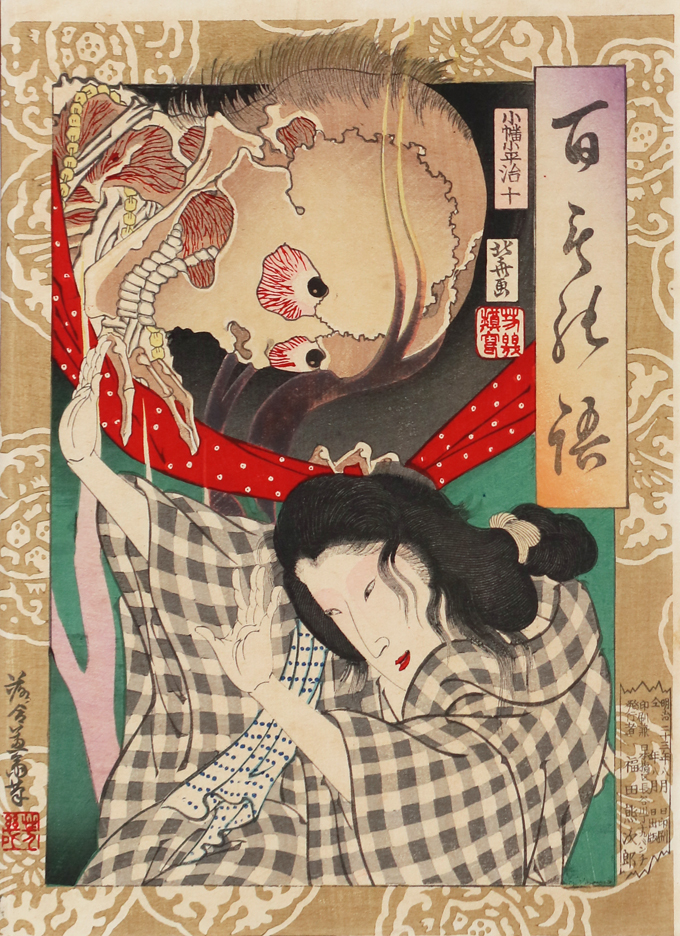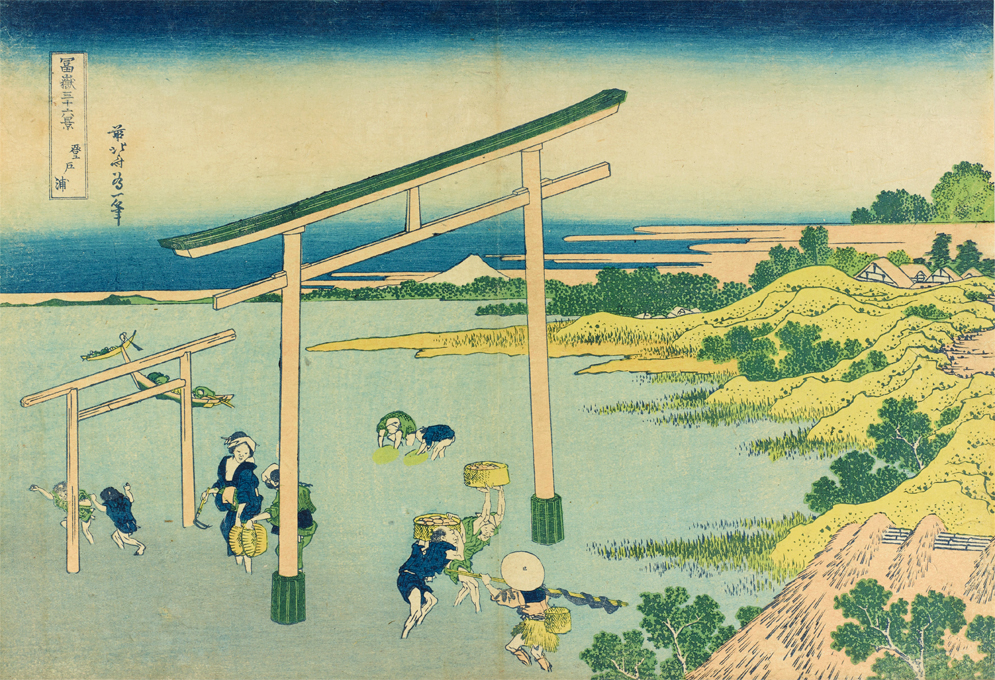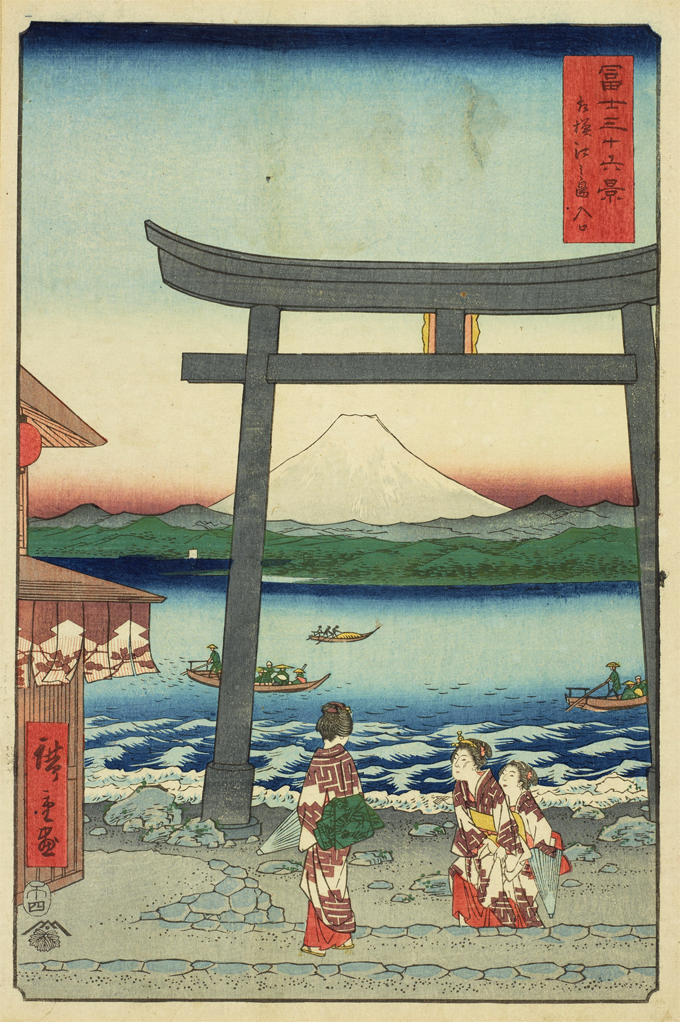Hiroshige’s Ojisan Encyclopedia
2023, February 3rd-March 26th
1st Term February 3rd-26th
2nd Term March 3rd-26th
Will be closed on February 6, 13, 20, 27- March 2, 6, 13, 20.
Opening Hours : 10:30 a.m. – 5:30 p.m. (Last Admission: 5:00 p.m.)
Admission : Adult ¥800 / University and High school students ¥600 / Junior High School Students and below
Smiling, Working and Traveling -Various Ojisan by Utagawa Hiroshige
Utagawa Hiroshige (1797-1858) is one of the most famous ukiyo-e artists who created many masterpieces of landscapes. When you look closely, you often find charming figures inhabiting these landscapes. These middle-aged men (“Ojisan” in Japanese) are the focus of this exhibition. They smile innocently, work hard, enjoy fine foods, and sometimes panic. The more attention you pay to Hiroshige’s Ojisan, the more you realize that they have their own personalities and charms.
By experiencing Hiroshige’s masterpieces paying close attention to these Ojisan, they will leave you a fresh impression. This exhibition introduces you to a new charm of Hiroshige’s work through masterpieces such as “Fifty-three Stations of the Tōkaidō Road (Hoeidō Edition)” to those that are rarely exhibited.
※This exhibition is inspired by the concept of “Ojisan Encyclopedia” and “Ojisan Encyclopedia Returns” held at Hiroshige Museum of Art Ena, newly composed with the collections of Ota Memorial Museum of Art.
1 Discovering a new Charm of Hiroshige’ work through Ojisan
In the works of Utagawa Hiroshige, various Ojisan (middle-aged men) with their own personality often appear. They are usually depicted as supporting characters of the landscape. However, if you look closely, you can see that their faces, expressions, and clothing are carefully articulated. Such detail allows us to understand their status and occupation, and sometimes even imagine the drama that each character is going through. As you pay attention to these Ojisan, you will enjoy the masterpieces you already know with more depth and color.
2 Ojisan everywhere! 150 Works from Masterpieces to Rarities by Hiroshige
The main characters in the 150 works on display during the period of this exhibition are all Ojisan. The exhibition introduces of Hiroshige’s masterpieces such as “Fifty-three Stations of the Tōkaidō Road (Hoeidō Edition)” and “Sixty-nine Stations of Kisokaidō Road,” as well as works that are rarely exhibited, all united under the theme of Ojisan!
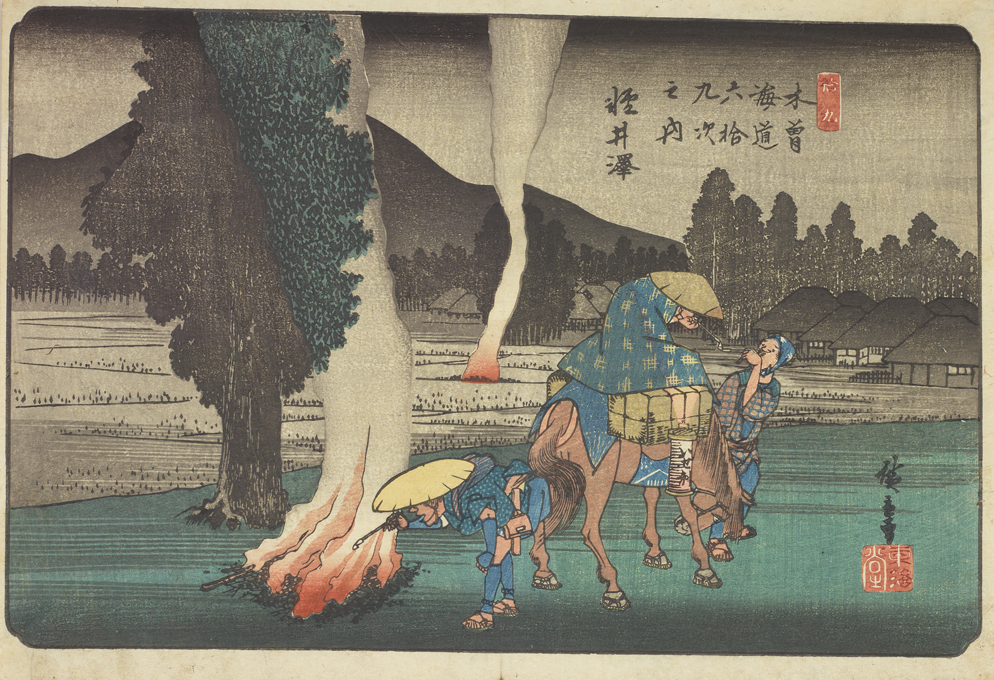
3 Hokusai, Kuniyoshi and Kiyochika -Ojisan Depicted by Popular Ukiyo-e Artists
Hiroshige was not the only artist who depicted various Ojisan. In this exhibition, we introduce Ojisan drawn by various ukiyo-e masters, such as Katsushika Hokusai, Keisai Eisen, Utagawa Kuniyoshi and Kobayashi Kiyochika. Please enjoy the differences in style and personality given to the Ojisan by each artist.
Admission
| Adult | 800 yen |
| University and High school students | 600 yen |
| Junior High School Students and below | Free |
Calendar
■Closed
休館日
1,2,6,13,20,27,28
2023 / 2
1,2,6,13,20,27,28
| SUN | MON | TUE | WED | THU | FRI | SAT |
|---|
休館日
1,2,6,13,20,27-31
2023 / 3
1,2,6,13,20,27-31
| SUN | MON | TUE | WED | THU | FRI | SAT |
|---|
China in Ukiyo-e
Discovering the Unexpected Relationship between Ukiyo-e and Chinese Culture
Ukiyo-e depicted a large number of Chinese people, including the heroes of “Three Kingdoms” and “Water Margin,” hermits, and ancient Chinese women. In addition, some of the Japanese flower-and-bird paintings are accompanied by Chinese poems, which shows how familiar the people of the Edo period were with Chinese culture. On the other hand, works that replaced the hermits with women or parodied the exploits of the great masters were also popular.
During the Edo period, Japan was closed to the outside world for a long period of time, but classical Chinese literature and folklore were well-established in education, and people were curious about the latest Chinese culture. Ukiyo-e artists also worked on all kinds of themes from China, and even created many other works based on them.
This exhibition introduces ukiyo-e from the Edo and Meiji periods that show the influence of Chinese culture in three parts. In the first part, we will look at works from the 18th century, when samurai warriors were also involved in the production of ukiyo-e. The second part will focus on works in the 19th century, which reflect the tastes of citizens, and in the third part, works depicted in the form of parodies will be featured. Throughout the exhibition, visitors will be able to discover the unexpected connections between ukiyo-e and China.
“Three Kingdoms” and “Water Margin” Boom Began from the Edo Period.
Even today, the Chinese stories “Three Kingdoms” and “Water Margin” are popular in video games and manga, but it was actually in the Edo period that these stories were translated and adapted.
The stories were also depicted in ukiyo-e. Especially, Utagawa Kuniyoshi played an important role in expanding the world of these stories. He created the popular series “One Hundred and Eight Heroes from the Water Margin” with 74 prints, and the series “Popular History of the Three Kingdoms” series which depicts heroes on large paper.
A Great Arrangement in Ukiyo-e Style – Heroes Swapped Gender!?
Rearranging various subjects is one of the characteristics of ukiyo-e. For example, the figures of heroes were sometimes depicted as humorous caricatures, or sometimes in the figures of townswomen, so that people enjoy the gap between the hero and the character. These works of parody show how people of the time were familiar with Chinese themes.

“China” Depicted by Hokusai, Hiroshige and Kuniyoshi
Many works by leading ukiyo-e artists of each era will also be introduced. These include Harunobu, who transferred Chinese subjects into Japanese scenes; Hokusai, who painted all kinds of subjects of Chinese origin; Kuniyoshi, who represented the heroes from “Water Margin” as characters popular with the Edo people; Hiroshige, who added Chinese poetry to his “kachō-ga (bird-and-flower pictures); and Yoshitoshi, who drew classical Chinese subjects in the Meiji era. We hope that you will enjoy the transition in the way Chinese culture was incorporated in each of works.
Admission
| Adult | 800 yen |
| University and High school students | 600 yen |
| Junior High School Students and below | Free |
Calendar
■closed
休館日
1-4,10,16,23,30,31
2023 / 1
1-4,10,16,23,30,31
| SUN | MON | TUE | WED | THU | FRI | SAT |
|---|
Darkness and Light -Kiyochika, Yasuji and Ryuson
2022, November 1st-December 18th
1st Term November 1st-23rd
2nd Term November 26th-December 18th
Will be closed on November 7, 14, 21, 24, 25, 28, December 5, 12.
Opening Hours : 10:30 a.m. – 5:30 p.m. (Last Admission: 5:00 p.m.)
Admission : Adult ¥1000 / University and High school students ¥700 / Junior High School Students and below
In 1876, Kobayashi Kiyochika (1847-1915) depicted an unprecedented view of Tokyo by incorporating Western techniques such as oil painting, lithography, and photography into ukiyo-e woodblock prints. Kiyochika’s “Kōsenga” (light-ray paintings), which beautifully captured changes in light and shadow, such as gas lamps shining in the dark at night and the sky at sunset with brilliant red, became very popular. Ukiyo-e artists such as Inoue Yasuji (1864-89) and Ogura Ryūson (date of birth and death unknown) followed after Kiyochika. Although the popularity of ray painting lasted only five years, it developed new possibilities for woodblock prints, and it should be regarded as the forerunner of the genre of “shin-hanga” (new prints) in the Taisho and Showa eras that have been the focus of much attention in recent years. This exhibition introduces 200 works by Kobayashi Kiyochika and Inoue Yasuji, as well as Ogura Ryūson, whose works have rarely been introduced to the public. Please enjoy the colors of darkness and light which are only possible through the use of woodblock prints. All exhibits will be changed between the first and second exhibition terms.
Highlight of the exhibition
1 200 works that tell the whole story of the “Kōsenga” (light-ray paintings) of Kiyochika, Yasuji and Ryūson will be exhibited.※The exhibits will be changed between the first term and the second term.
2 A rare opportunity to focus on Inoue Yasuji, an ukiyo-e artist who died very young, and Ogura Ryūson, a mysterious artist.
3 Comparative display of rare types of works, such as “suri-chigai” (different print editions) which used the same wood blocks but changed colors substantially, and “nisu-biki” (varnishing), which coats the print with varnish.
Introduction of the Artists
Kobayashi Kiyochika(1847~1915)
Kobayashi Kiyochika is one of the representative ukiyo-e artists in the Meiji era. He was known to have learned photography and oil painting, and his unique style of painting expressively captured light and shadow is called “Kōsen-ga” (light-ray paintings), which became extremely popular. As a side note, Kiyochika quit producing Kōsen-ga after 1881, and developed a different style of picture, such as old-style landscapes, historical pictures and war pictures.
Inoue Yasuji(1864~89)
Inoue Yasuji was a pupil of Kobayashi Kiyochika. He produced large-sized Kōsen-ga pictures that faithfully followed the painting style of Kiyochika. Around 1884, he changed his art name to Inoue Tankei and started producing large-sized triptych landscape pictures, but he died young at the age of 26.
Ogura Ryūson(Years of birth and death unknown)
Although he produced Kōsenga pictures around 1880 to 1881 following Kiyochika, only 9 of his works have been found. He is an unidentified and mysterious artist whose background is completely unknown. Ryūson’s representative work “View of Yushima” is characteristic for its mysterious atmosphere of two men quietly looking at the moon.
Admission
| Adult | 1000 yen |
| University and High school students | 700 yen |
| Junior High School Students and below | Free |
Calendar
■Closed
休館日
7,14,21,24,25,28
2022 / 11
7,14,21,24,25,28
| SUN | MON | TUE | WED | THU | FRI | SAT |
|---|
休館日
5,12,19-31
2022 / 12
5,12,19-31
| SUN | MON | TUE | WED | THU | FRI | SAT |
|---|
Transportation in Ukiyo-e – Cars, Ships and Railways
Discover the Transportation in the Edo Period through Ukiyo-e
Transportation is an essential part of our daily lives. In the Edo period, there were various transport systems by manpower, horses, and boats. Edo was a city of water, surrounded by Edo Bay and Sumida River, with many waterways running horizontally and vertically. Boats were an essential means of transportation for the people of Edo and shipping business between Edo and other cities flourished. On land, highways such as the Tokaido Road were developed for business transportation and became popular among the common people as a route for traveling long-distance. The various use of transportation is vividly depicted by ukiyo-e artists such as Utagawa Hiroshige and Katsushika Hokusai.
This year also commemorates the 150th anniversary of the introduction of railroads. Ukiyo-e in the Meiji era (1868-1912) actively depicted steam locomotives and railroads, which were new encounters to the people. The railroad system along with horse-drawn carriages, rickshaws and other new forms of transportations were symbols of civilization.
While transportation logistics using the internet has developed in recent years due to COVID-19, this exhibition focuses on the various means of transportation in the Edo period, as a driving force of modernization.
The Reality of the Lives in Edo uncovered through Transportion
Let’s take a look at Edo depicted by artists such as Utagawa Hiroshige and Katsushika Hokusai from the perspective of transport. On one hand, ukiyo-e depicts various figures who are “transporting” something of their own. We notice people serving food at restaurants, selling goods on the street, and carrying luggage on a trip. On the other hand, ukiyo-e also depicts a wide range of vehicles as means of transportation. Ferry boats for crossing rivers and ships used as taxis to visit pleasure quarters took advantage of the topography of Edo with many waterfront areas. People and horses carried luggage for travelers in relays between inns, and couriers delivered documents from Edo to Osaka in only a few days. In a time when there were no cars or trains, there was a more extensive transportation system.
By paying close attention to the various forms of transportation in ukiyo-e, we can understand how the people of Edo lived.
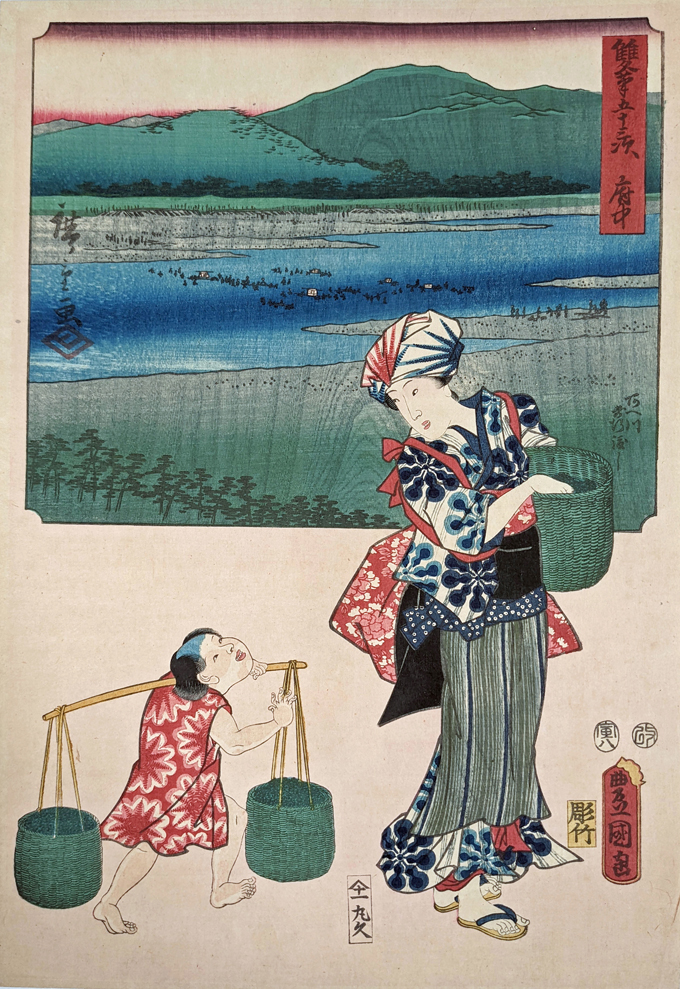
150th Anniversary of the Birth of the Railroads- Various Vehicles in Ukiyo-e are on Display
In October 1872, the railroad connecting Shimbashi and Yokohama opened. October 2022 marks the 150th anniversary. Since about two years before the actual inauguration of the railroad system, ukiyo-e artists started to actively depict steam locomotives and railroads with imagination. The large number of ukiyo-e published reveals the enthusiasm for the new infrastructure. This exhibition features not only the railroad system, but also the wide variety of transportation in ukiyo-e such as horse-drawn carriages, rickshaws, boats, balloons, and other vehicles.

Admission
| Adult | 800 yen |
| University and High school students | 600 yen |
| Junior High School Students and below | Free |
Calendar
■closed
休館日
3,11,17,24,27-31
2022 / 10
3,11,17,24,27-31
| SUN | MON | TUE | WED | THU | FRI | SAT |
|---|
Animals in Ukiyo-e
2022, July 30th-September 25th
1st Term July 30th-August 28th
2nd Term September 2nd-25th
Will be closed on August 1, 8, 15, 22, 29-31, September 1, 5, 12, 20.
Opening Hours : 10:30 a.m. – 5:30 p.m. (Last Admission: 5:00 p.m.)
Admission : Adult ¥1200 / University and High school students ¥800 / Junior High School Students and below
Cute! Funny! A Little Weird? -Enjoy the Rich Variety of Expressions of Animals!
Various animals appear in ukiyo-e. In addition to pets such as cats and dogs, and domestic animals such as horses and cows, those believed to be good omens, such as cranes and turtles, imported from overseas, such as elephants and leopards, and even catfish, based on the superstition that catfish cause earthquakes, are depicted in ukiyo-e.
Moreover, ukiyo-e artists used their imagination to create anthropomorphic creatures that do not exist in this world, such as Torakoishi.
Ukiyo-e is indeed a treasure trove of animal representations. This exhibition introduces approximately 160 works, offering visitors the opportunity to enjoy the rich variety of animals in ukiyo-e. This summer, how about visiting the museum and enjoying the cute and a little bit strange ukiyo-e animals?
Ukiyo-e Reveals the Deep Relationship Between the People of Edo and Animals
Ukiyo-e portrays people doting on their pets as we do today. On the other hand, ukiyo-e also shows us aspects of the lives of people and animals that are no longer seen today, such as a dog snatching fish from a fishmonger, and a traveler on a horse. Ukiyo-e also depicts various scenes of everyday life, such as horned owls, which were drawn because they were thought to prevent smallpox, and dogs that were said to have visited Ise Shrine in place of their owners. Here we would like to introduce the activities of animals that sometimes exceed the imagination of modern people.

Legendary Spiritual Beasts and Strange Creatures
Imaginary creatures appear in legends and tales, such as dragons believed to have the spiritual power to bring rain, white elephants believed to be the vehicles of Fugen Bosatsu (Samantabhadra), and haunted foxes and cats, also played an important role in ukiyo-e. But that’s not all. Ukiyo-e also features strange creatures such as Torakoishi, which is a combination of a tiger and a stone, and mysterious creatures that are combinations of all the signs of the Chinese zodiac. Experience the aesthetic sense of the people of Edo, who enjoyed not only pictures of traditional animals, but also delightful works created with the free imagination of the artists.
Dancing, Working, and Dressing Up – Active Anthropomorphic Animals
Among ukiyo-e depicting animals, the most popular genre is anthropomorphic animals. In this exhibition, you will see rabbits wrestling, cats doing business and studying, birds fighting and having a party, octopuses dancing, and many more. The animals behaving like humans are very charming and humorous, and in addition, they show us things about the lifestyle and customs of the time. Please enjoy their charm.

From the Masters to Minor Artists – Animal Pictures by 40 Artists
The highlights of this exhibition include masterpieces by famous ukiyo-e artists, such as “Tiger in the Rain,” a representative work of Hokusai‘s later years, and Hiroshige‘s “One Hundred Famous Views of Edo: Asakusa Ricefields and Torinomachi Festival”, one of the most popular ukiyo-e drawn cats. Moreover, the number of ukiyo-e artists introduced in this exhibition reaches 40. Visitors can enjoy not only famous works, but also the works of unknown animal picture masters such as Utagawa Yoshifuji, who specialized in cute anthropomorphic animals, and Utagawa Yoshikazu, the creator of “Torakoishi”, who displayed an outstanding sense of humor.
Highlight of the Exhibition
Kikukawa Eizan “Tiger” (1st term)
The tiger has been a familiar animal for Japanese people for a long time, despite the fact that it never inhabited Japan. Although sometimes depicted as a raging figure confronting a dragon, in this work, a very charming tiger appears from behind a bamboo tree with large, gawking eyes, a smiling mouth, and plump paw pads. The vertically long surface of this picture is a combination of two normal size ukiyo-e prints. This format was also called “kakemono-e“, and was sometimes displayed as a hanging scroll with a frame around it. The tigers in this work may have had just the right degree of friendliness for the people of Edo to display in their house for enjoyment.
Admission
| Adult | 1200 yen |
| University and High school students | 800 yen |
| Junior High School Students and below | Free |
Calendar
■closed
休館日
4,11,19,25-29
2022 / 07
4,11,19,25-29
| SUN | MON | TUE | WED | THU | FRI | SAT |
|---|
休館日
1,8,15,22,29-31
2022 / 08
1,8,15,22,29-31
| SUN | MON | TUE | WED | THU | FRI | SAT |
|---|
休館日
1,5,12,20,26-30
2022 / 09
1,5,12,20,26-30
| SUN | MON | TUE | WED | THU | FRI | SAT |
|---|
From the Genpei War to the Kamakura Period -Kiyomori, Yoshitsune and Yoritomo
2022, July 1st-24th
Will be closed on July 4, 11, 19.
Opening Hours : 10:30 a.m. – 5:30 p.m. (Last Admission: 5:00 p.m.)
Admission : Adult ¥800 / University and High school students ¥600 / Junior High School Students and below
Tracing the Rise and Fall of Samurai Warriors through Ukiyo-e
The Jishō-Juei Rebellion (1180-85) that at the end of the Heian period known as the “Genpei War” was a monumental battle between the warriors led by Minamoto no Yoritomo and the the Taira clan. Even after Yoritomo had conquered the Taira clan and established the Kamakura shogunate, a period of power struggles continued between Yoritomo’s successors and the influential court nobles, especially the Hōjō clan.
Stories of the survival wars of samurai families became popularized as military chronicles such as “The Tale of the Heike” and “Azuma Kagami”. They were widely known as subjects of novels and kabuki plays in the Edo period, and were depicted in numerous ukiyo-e works as popular subjects.
Recently, the time period has been recapturing popular attention, through animation and TV dramas. This exhibition will focus on this time period, to tell the story of the rise and fall of samurai warriors through ukiyo-e.

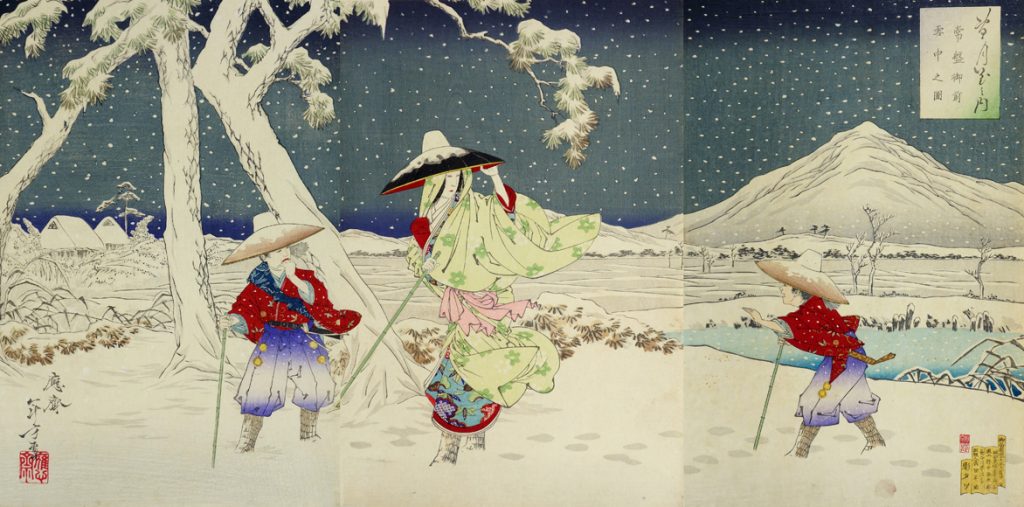
Episodes of Glory and Tragedy that Fascinated People in Edo
The Taira clan established by Taira no Kiyomori, despite its brief era of glory, continued to fall and finally perished at Dannoura. Minamoto no Yoshitsune who destroyed the Taira clan with his genius military strategy, had to die an unwilling death as he provoked his elder brother Yoritomo’s antipathy. Many prominent vassals who supported the early times of the Kamakura shogunate with good faith perished in the struggle for power. The lives of those who lived during such turbulent times were often filled with spectacular victories and tragedies at the same time. These dramatic narratives, such as those of Yoshitsune, were featured in novels, kabuki plays, and ukiyo-e, and captivated the attention of the people during the Edo period.
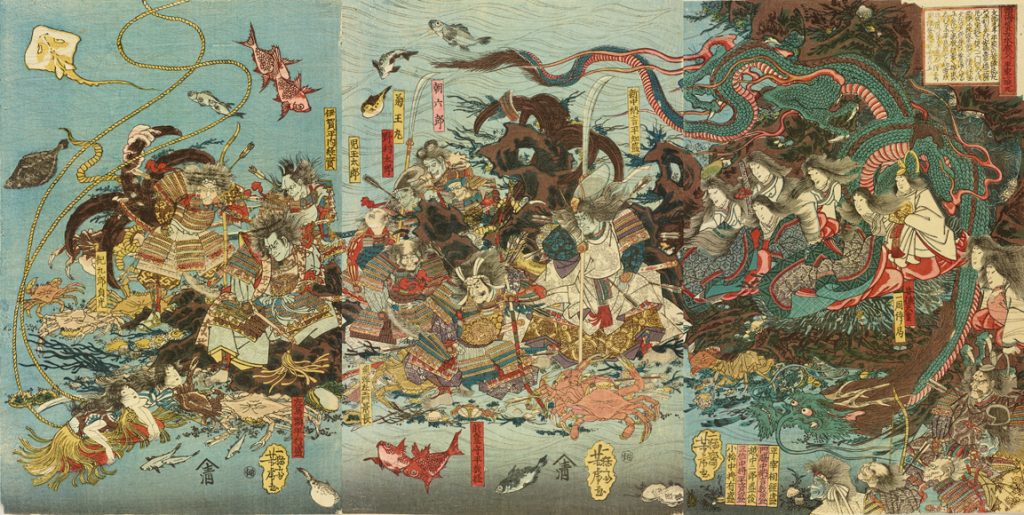
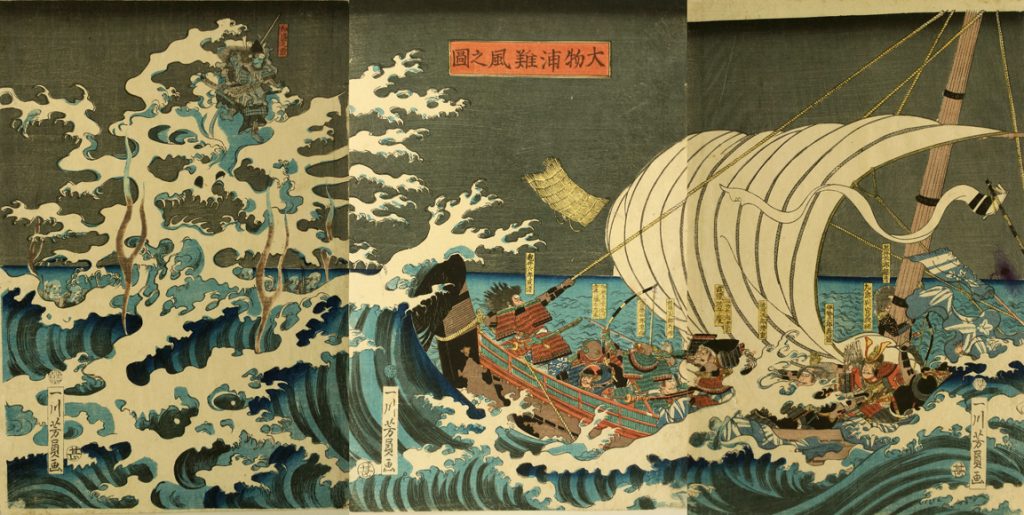
Kuniyoshi, Yoshitoshi and Hiroshige – Heroes Portrayed by Ukiyo-e Artists
Utagawa Kuniyoshi, a leading artist of musha-e, drew many warriors of the Genpei period. He depicted various stories from this time period with a familiar yet powerful style. This fascination was carried on by his pupils, especially Tsukioka Yoshitoshi, who continued to depict the subject with sophisticated style through the Meiji period.
This section exhibits various works, including the grandeur musha-e and caricatures by Utagawa Hiroshige, the master of landscape pictures, to demonstrate the rich and unique styles of ukiyo-e artists.
Highlight of the Exhibition
Tsukioka Yoshitoshi “Mirror of Famous Commanders of Great Japan: Commander Minamoto no Yoritomo”
Spreading their wings, a flock of cranes is taking off into the sky. Minamoto no Yoritomo and his attendants look up at them. In August 1187, two years after Yoshitsune and his followers defeated the Taira clan in the Battle of Dannoura, Yoritomo held a Hōjō-e at Tsurugaoka Hachiman-gū Shrine in Kamakura. Hōjō-e is a ceremony that releases captured creatures, based on the Buddhist precept against killing. This picture is thought to depict the legend that a thousand cranes were released at the ceremony.
Yoritomo seems satisfied as he watches the cranes, the symbol of good fortune, fly away. The scene may imply Yoritomo’s feeling of grand accomplishment when he finally achieved great power, as he defeated his old enemy, the Taira clan.
Two years later, in 1189, Yoritomo eliminated his younger brother Yoshitsune who had developed a hostile relationship with him and Fujiwara no Yasuhira, who had sheltered Yoshitsune. In 1192, Yoritomo became a Shogun and established a new age of samurai.
Admission
| Adult | 800 yen |
| University and High school students | 600 yen |
| Junior High School Students and below | Free |
Calendar
■closed
休館日
4,11,19,25-29
2022 / 07
4,11,19,25-29
| SUN | MON | TUE | WED | THU | FRI | SAT |
|---|
Hokusai and His Rivals
2022, April 22nd-June 26th
1st Term April 22nd-May 22nd
2nd Term May 27th-June 26th
Will be closed on April 25, May 2, 9, 16, 23-26, 30, June 6, 13, 20.
Katsushika Hokusai is a worldly famous ukiyo-e artist. He achieved great fame with his landscape pictures, including “Thirty-six views of Mt. Fuji” and works in various other genres. Naturally, however, Hokusai was not the only ukiyo-e artist active during the time. A large number of ukiyo-e artists competed with Hokusai, and influenced each other’s works. This exhibition will not only focus on Hokusai’s works, but put them in conversation with the works by more than 15 artists who were contemporaneous with Hokusai or succeeded him.
Introducing the interactions between Hokusai and his rivals
The numerous exhibitions of Katsushika Hokusai held at various museums, mostly focused on his works exclusively. Utagawa Hiroshige, who also excelled at landscape pictures, is the only other artist whose works have been presented in comparison. This exhibition will not only present works by Utagawa Hiroshige, but also those by many other artists such as Tōshūsai Sharaku, Keisai Eisen, and Utagawa Kuniyoshi, who were active in the same period, to introduce Hokusai’s relationship and interactions with such ukiyo-e artists who worked during his time.
An extensive exhibition with a wide variety of genres
Hokusai’s rivalry with numerous artists is an indication of how he was active in so many different genres. We will put Hokusai’s late masterpiece, “Thirty-six Views of Mt. Fuji” and a wide range of other works, including pictures of kabuki actors, warriors, landscapes, and beautiful women, in dialogue with works by other artists on display.
Discovering works by succeeding artists who learned from Hokusai
Hokusai not only had a huge impact on the works of rivaling artists of his generation but also on the artists of the following generation. His influence extended beyond his direct pupils, to the artists who belonged to different schools. This exhibition introduces works by artists of the generation after Hokusai, who learned through imitating his works.
Highlight of the Exhibition
Katsushika Hokusai “Thirty-six Views of Mt. Fuji: Seashore at Nobotoura” (1st term)
Utagawa Hiroshige “Thirty-six Views of Mt. Fuji: Entrance of Enoshima Island in Sagami Province” (1st term)
After the death of Katsushika Hokusai, Utagawa Hiroshige published his new series “Thirty-six Views of Mt. Fuji”. Although the location differs, Hokusai and Hiroshige both depicted Mt. Fuji viewed through a torii gate. Hokusai attempted a geometric and eccentric composition while Hiroshige’s composition seems to be depicting the scenery as he saw it. These works which are of the same subject, brings forward the distinct difference of their artistic styles.
Admission
| Adult | 1000 yen |
| University and High school students | 700 yen |
| Junior High School Students and below | Free |
Calendar
■Closed
休館日
1-21, 25
2022 / 04
1-21, 25
| SUN | MON | TUE | WED | THU | FRI | SAT |
|---|
休館日
2, 9, 16, 23-26, 30
2022 / 05
2, 9, 16, 23-26, 30
| SUN | MON | TUE | WED | THU | FRI | SAT |
|---|
休館日
6, 13, 20, 27-30
2022 / 06
6, 13, 20, 27-30
| SUN | MON | TUE | WED | THU | FRI | SAT |
|---|

